Previous Layout: SP Coast Line in N Scale
Although this layout no longer exists, I thought I’d share some of the construction phases of the SP Coast Line in N scale. I started building it in 2006, and while the scenery was never fully completed, pretty soon the trackwork was. This allowed me to host several operating sessions – the main goal I had in mind while designing the layout.
Description
The layout depicted a portion of the Southern Pacific Coast Line in California, set in the 1970s. It was a double-deck layout, with the lower deck serving as staging and the upper deck scenicked.
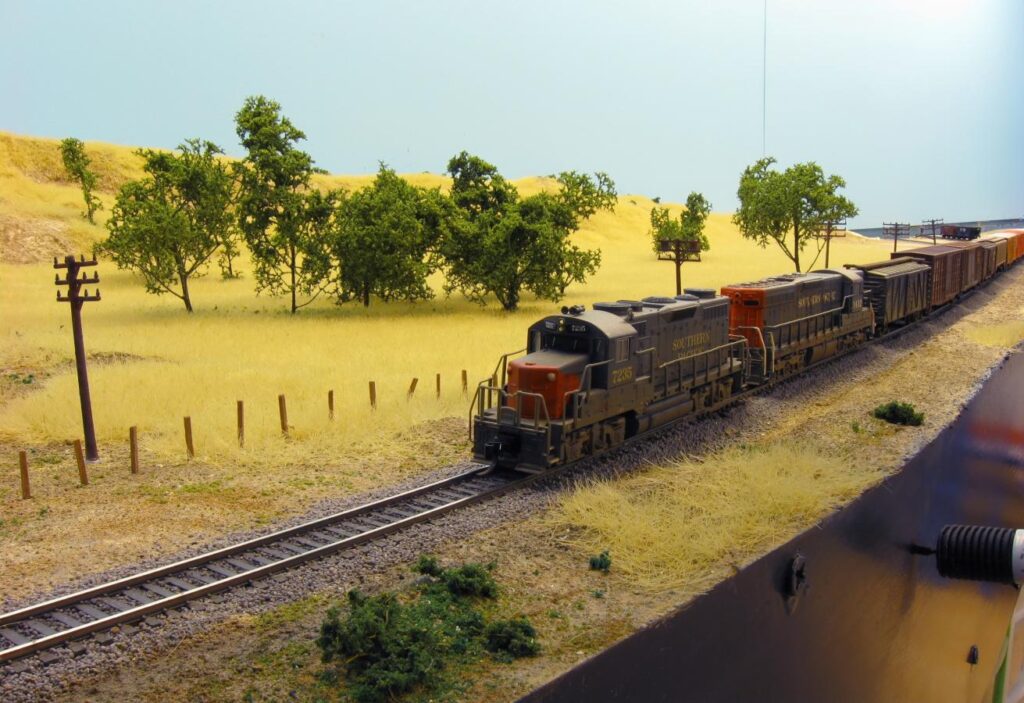
The focal point was Guadalupe Yard, where most trains stopped and where local freight trains originated. The yard featured a team track, a couple of spurs serving rail-served industries, and an interchange with the Santa Maria Valley Railroad. Most of the cars interchanged were reefers and sugar beet gondolas – I chose to model stub tracks instead of the actual branch line.
North of Guadalupe was Callender, which included a long siding and a couple of spurs serving a refinery and coke ovens.
South of Callender, I represented Surf, which featured a connection to the Lompoc Branch. This branch served several industries in the Lompoc community, and I modeled it as a stub track with visible staging to represent the branch.
Overall, it wasn’t a huge layout (fitting in a 20m² room – about 220 square feet), but by European standards, it was quite large. Nonetheless, it was very fun to operate, with manifest trains stopping at Guadalupe to pick up and set out cars, as well as slow-paced local freights serving industries along the line.
The layout featured Atlas Code 55 #7 turnouts on the main and #5 turnouts elsewhere, with all other track being Micro Engineering Code 55 flex track. All turnouts were manually operated – staging tracks used Caboose Industries ground throws, while the rest were controlled via scratchbuilt metal rods with knobs on the fascia, connected to SPDT switches that powered the frogs. All trains were controlled with DCC.
SP Coast Line in N Scale Trackplan
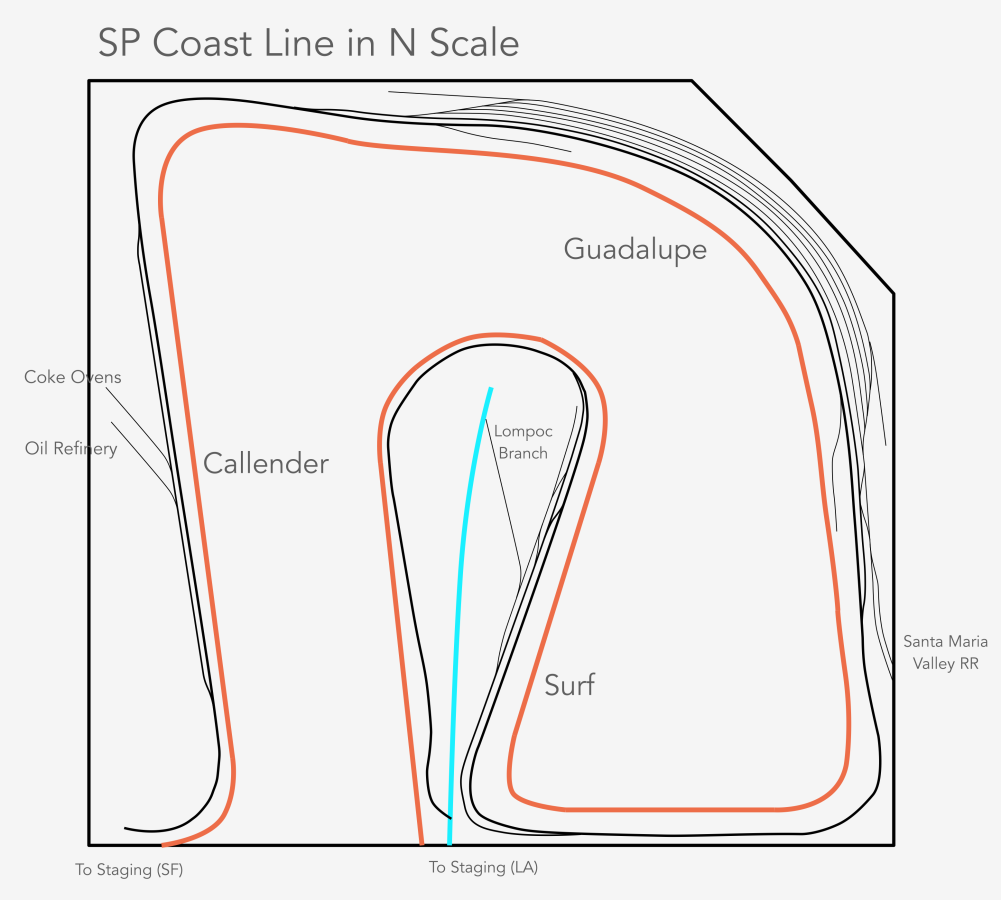
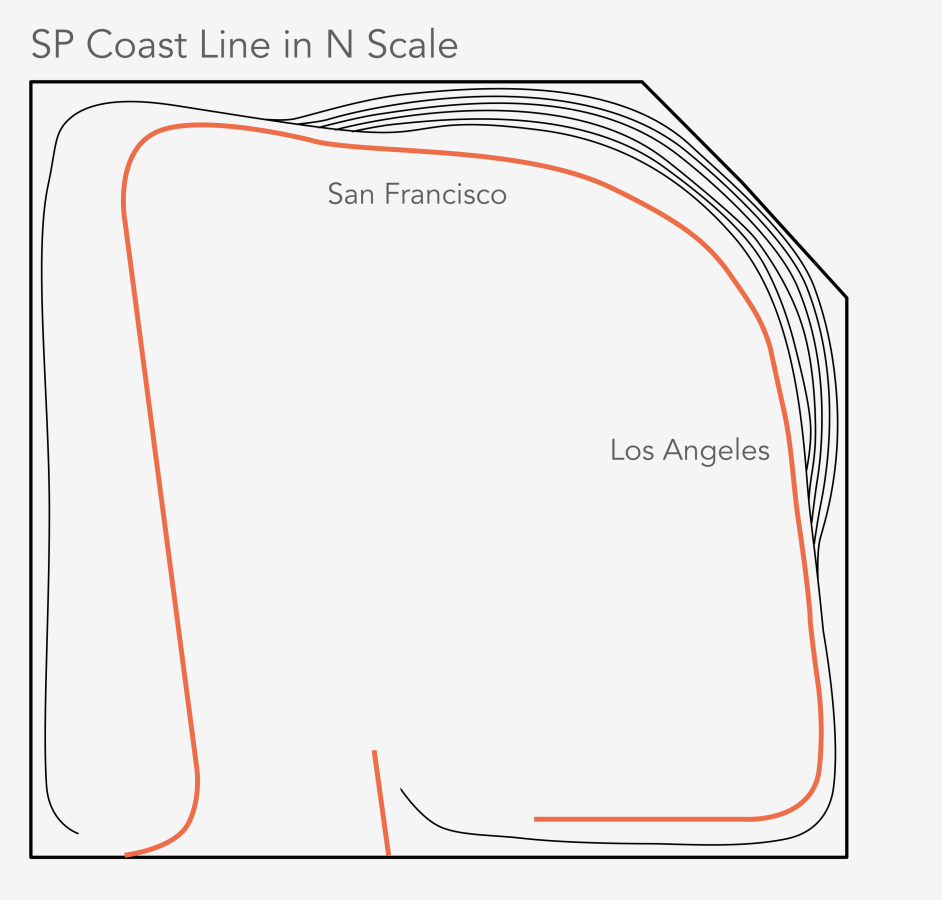
Benchwork
Before building this layout, I had a European-style layout, which allowed me to reuse most of the basic benchwork, including wall-mounted brackets and L-girders. Below are the staging yard and what became Callender.
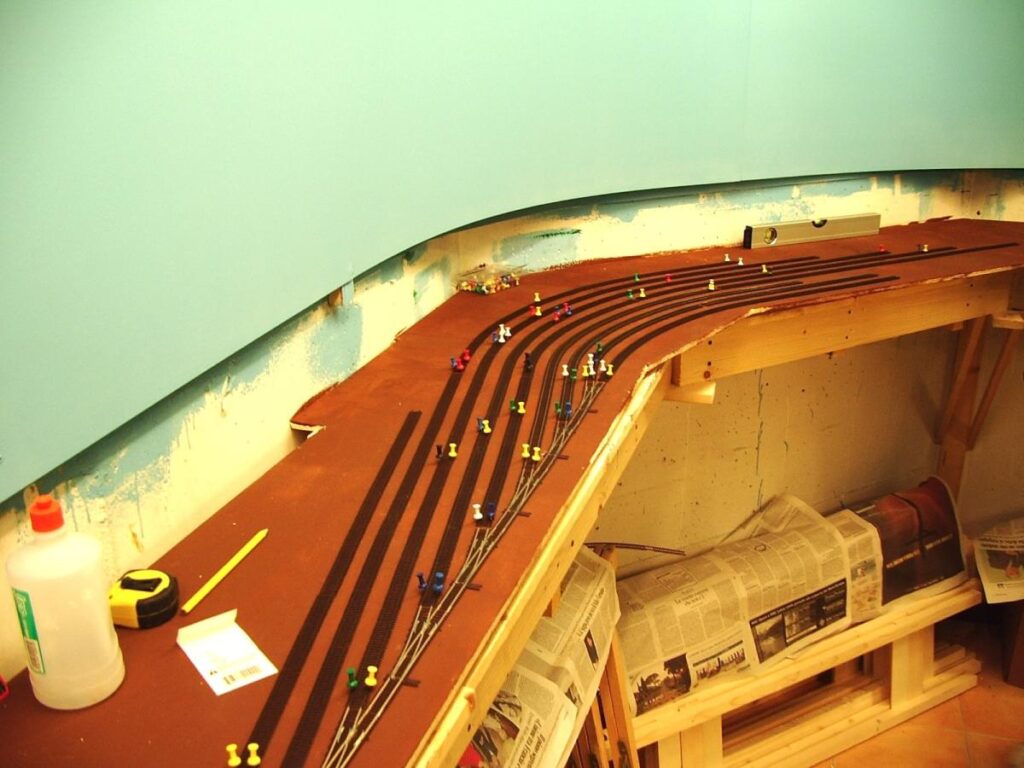
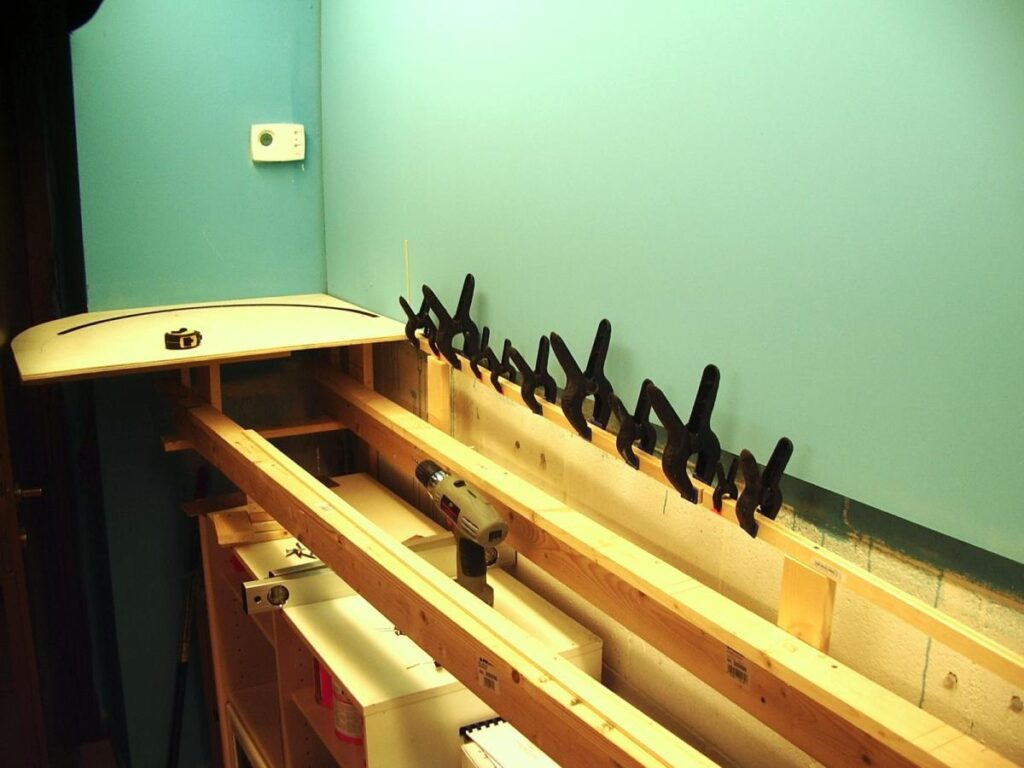
After completing the staging level, I started building the upper deck. Here are Callender with the siding and two spurs, and the plywood base for Guadalupe Yard.
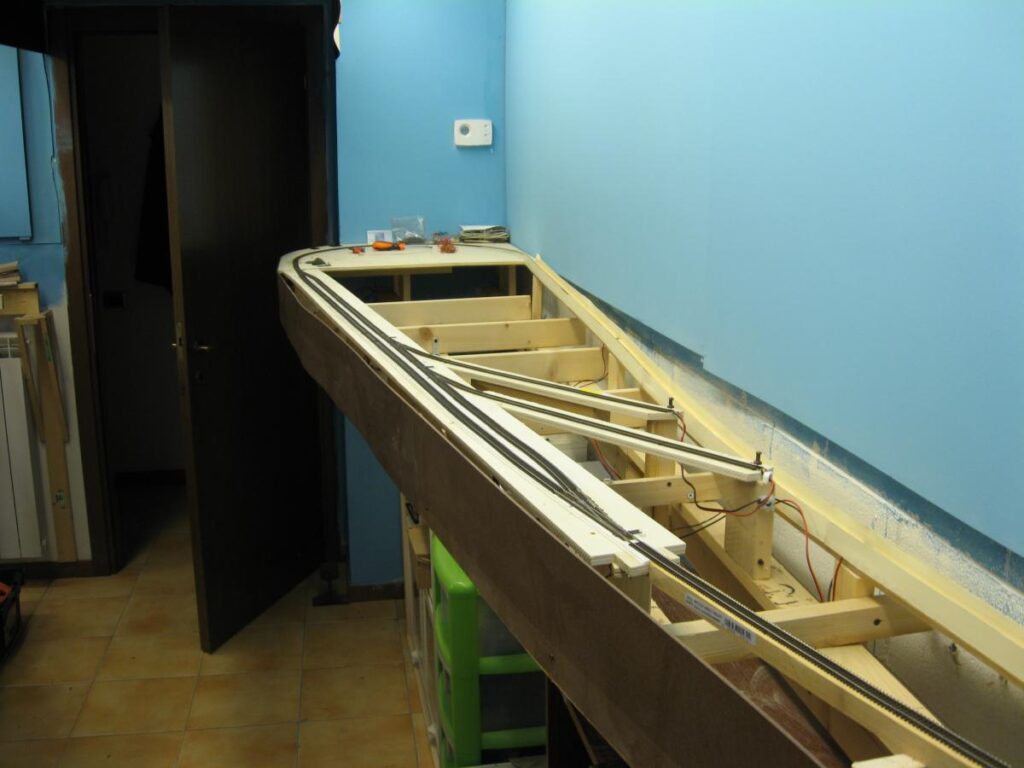
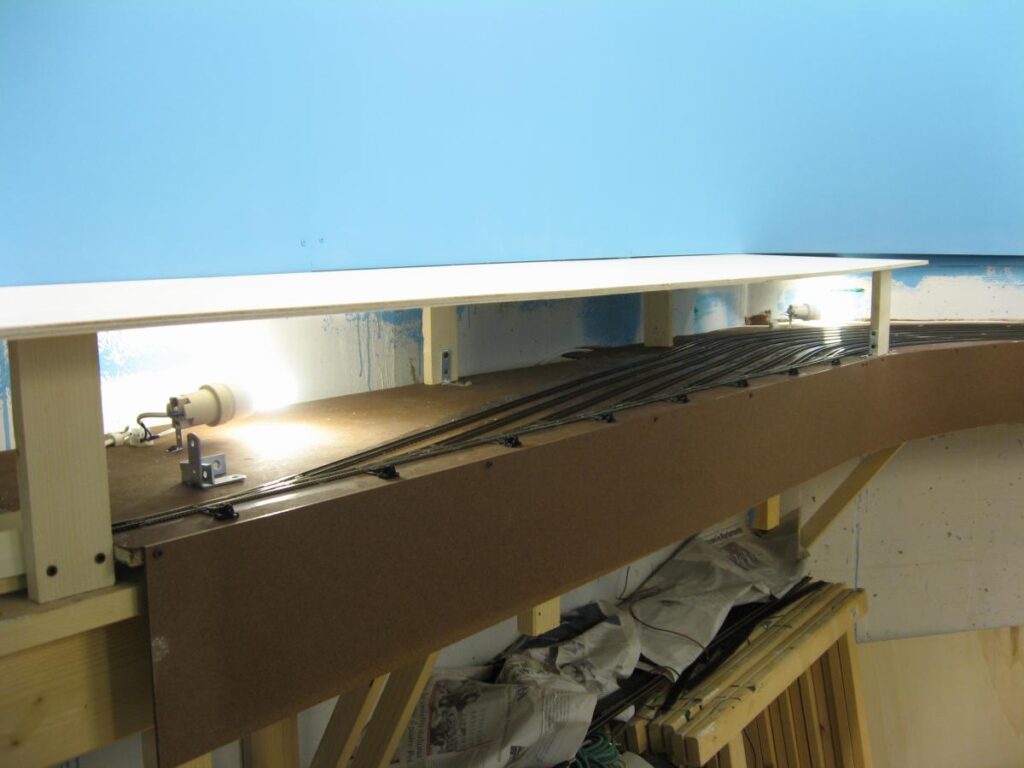
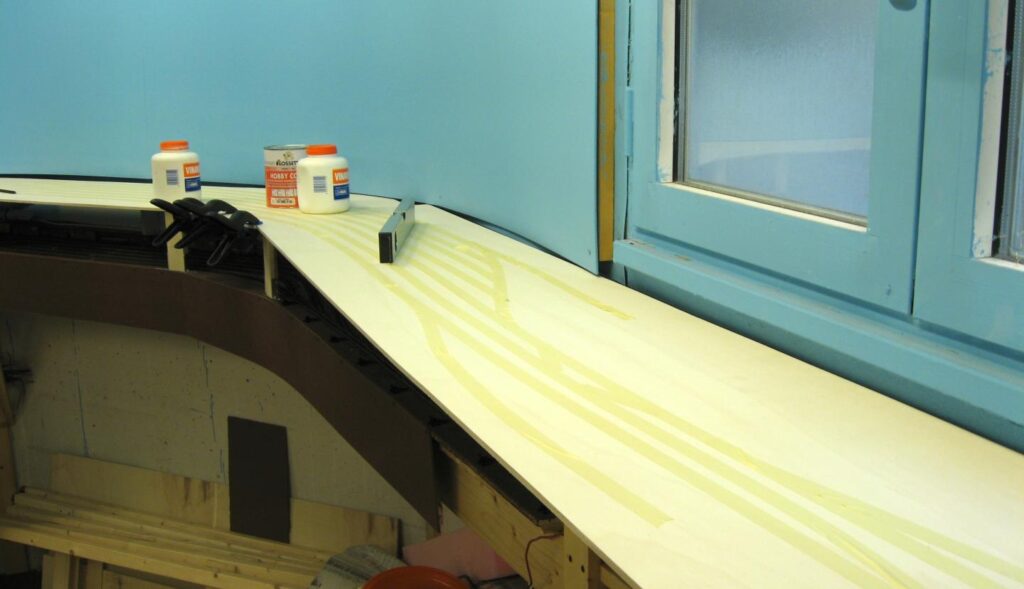
I used masking tape to mock up the yard, allowing me to visualize its overall footprint and make final adjustments before permanently gluing down the turnouts and tracks.
Trackwork
After the main Guadalupe Yard plywood base was complete, I started laying Atlas code 55 #7 and #5 turnouts, with Micro Engineering code 55 flextrack.
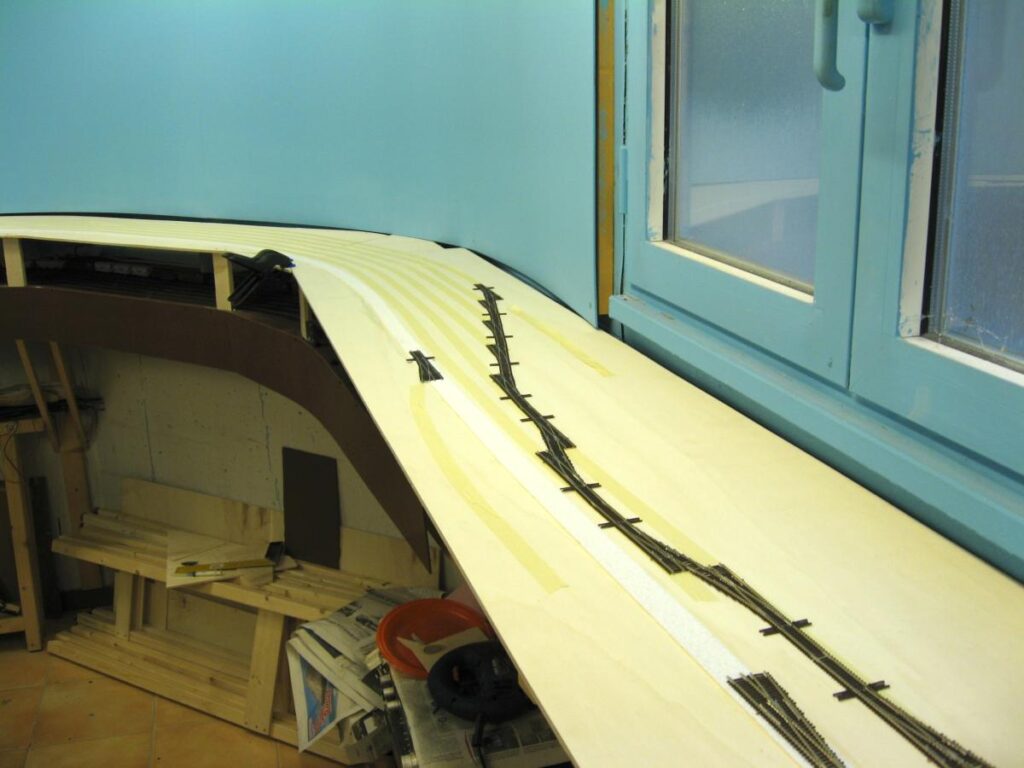
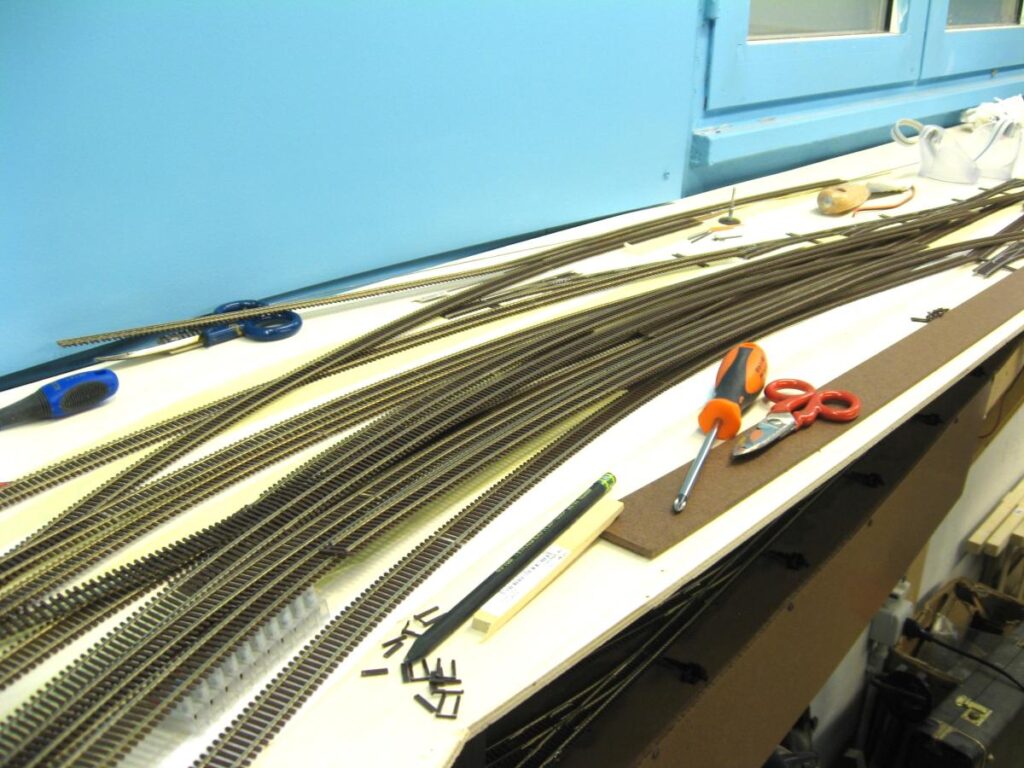
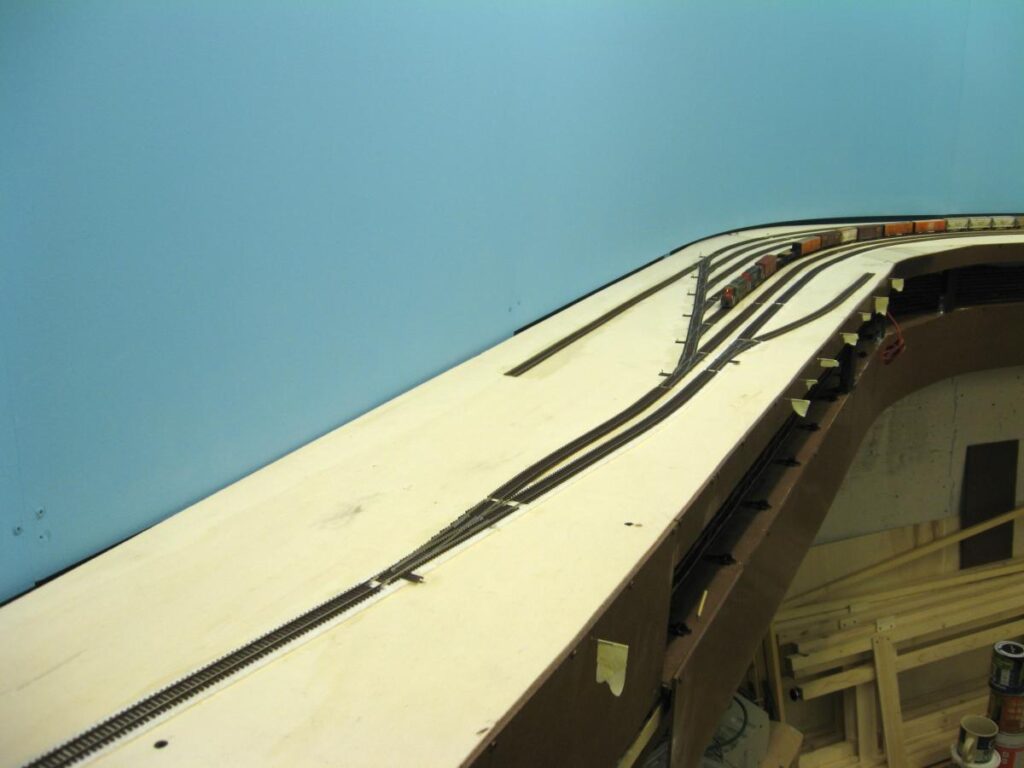
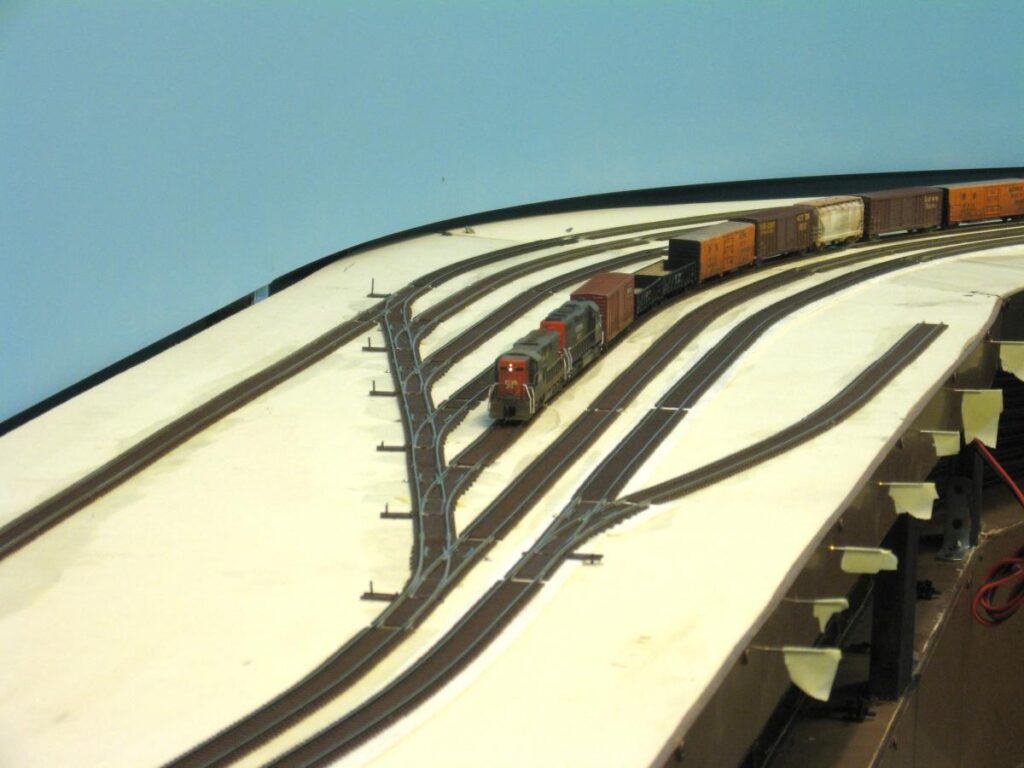
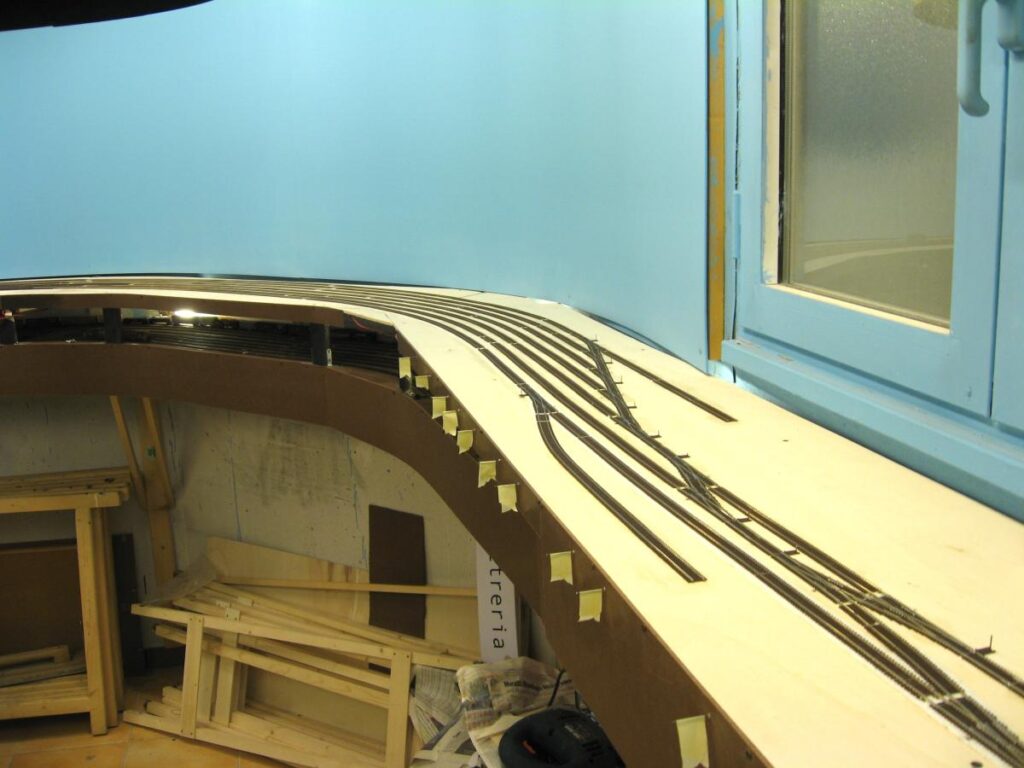
First Test Operating Session on the SP Coast Line in N Scale
After finishing the Guadalupe Yard trackwork, and having Callender sidings and spurs operational, I held a first operating session with a few friends.
Here is Guadalupe on the upper deck, and San Francisco / Los Angeles staging on the lower deck
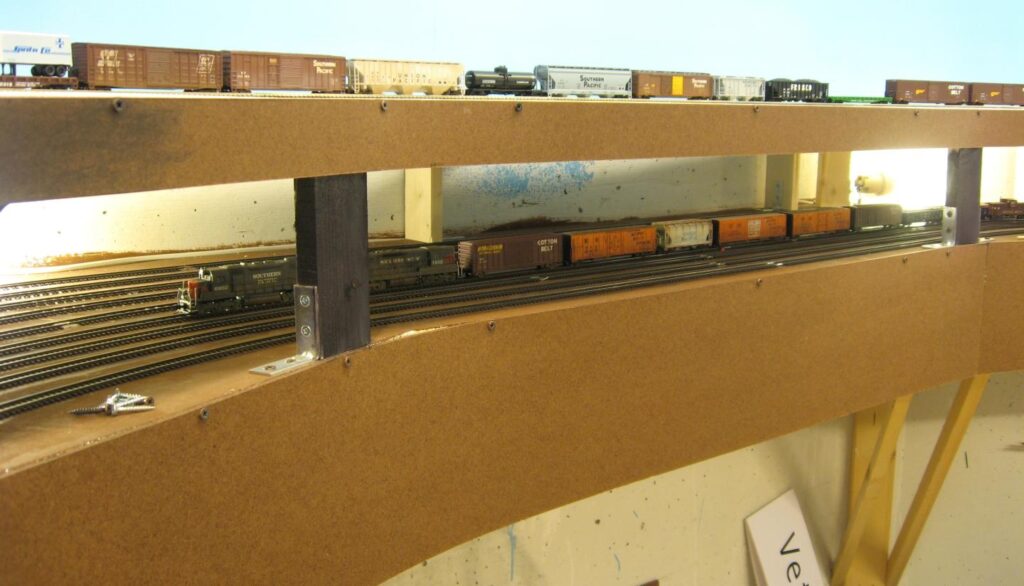
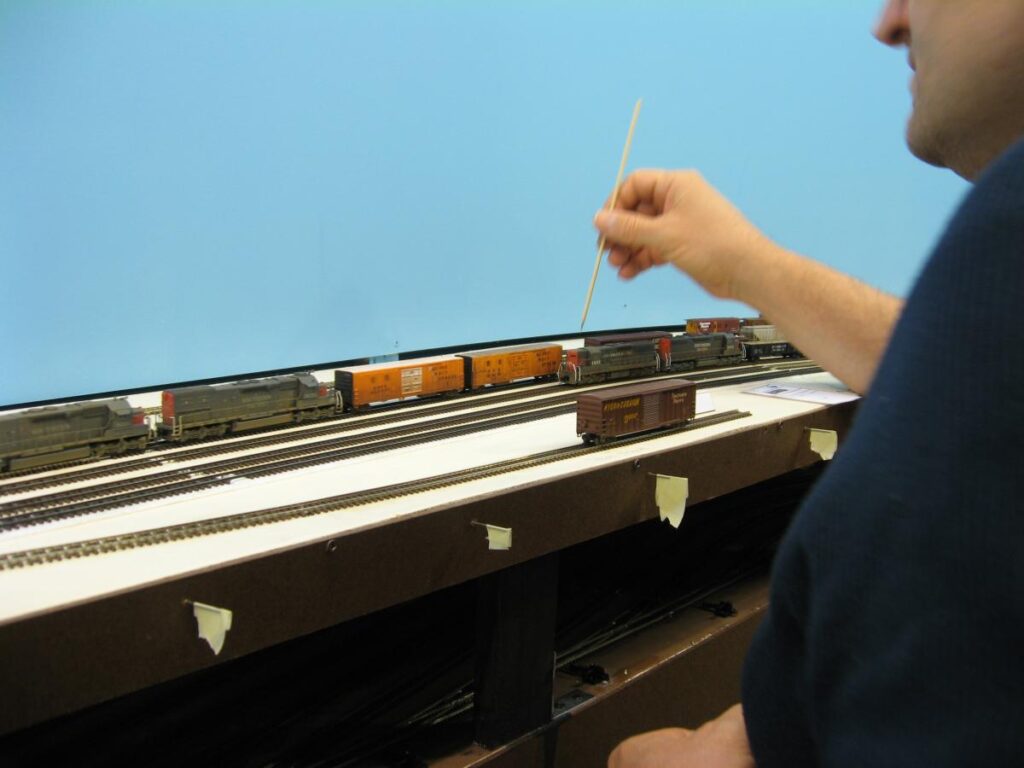
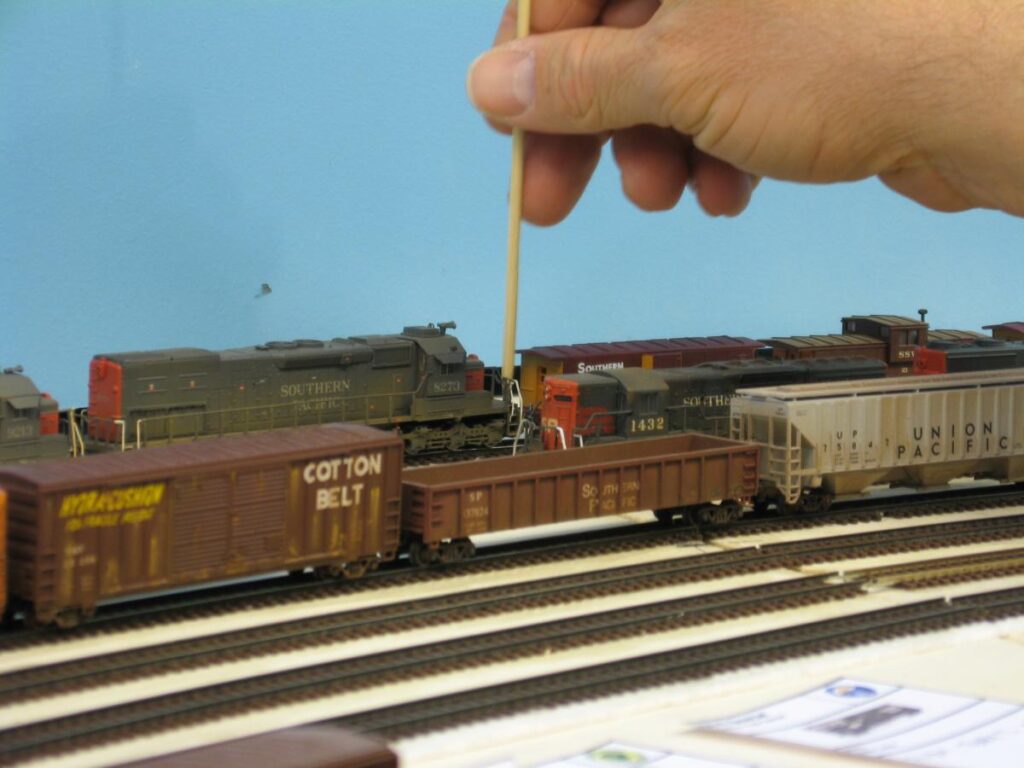
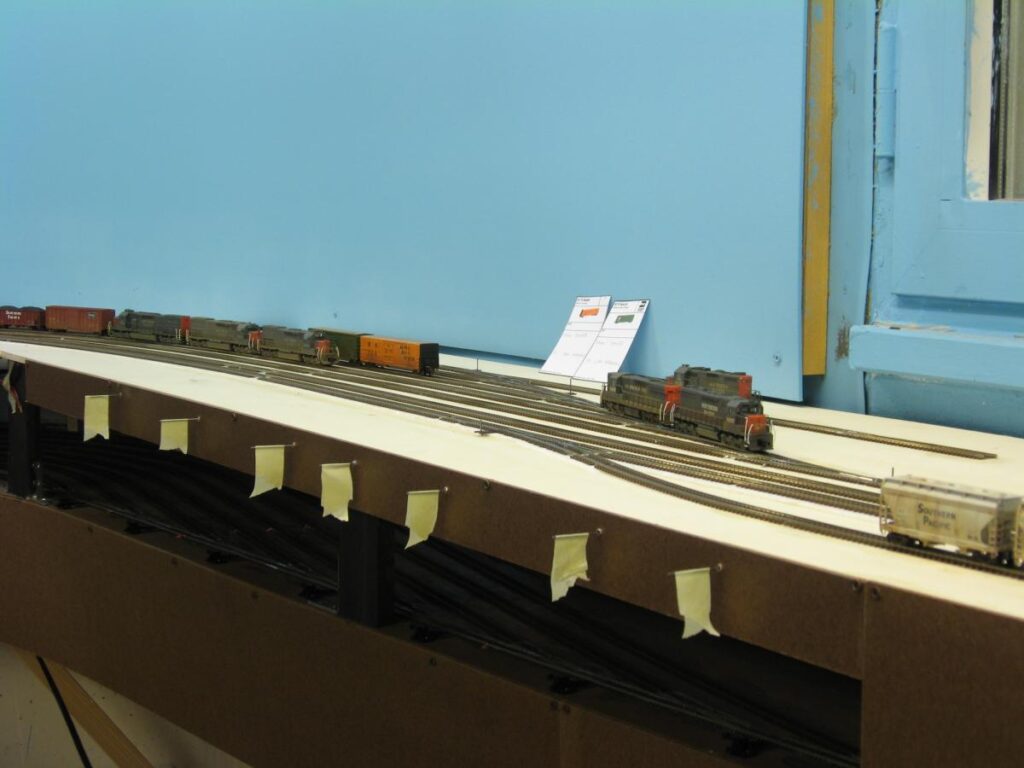
After the first operating session, I felt the urge to complete the trackwork and drive the golden spike. So I started working on the portion of layout south of Guadalupe representing Surf, CA.
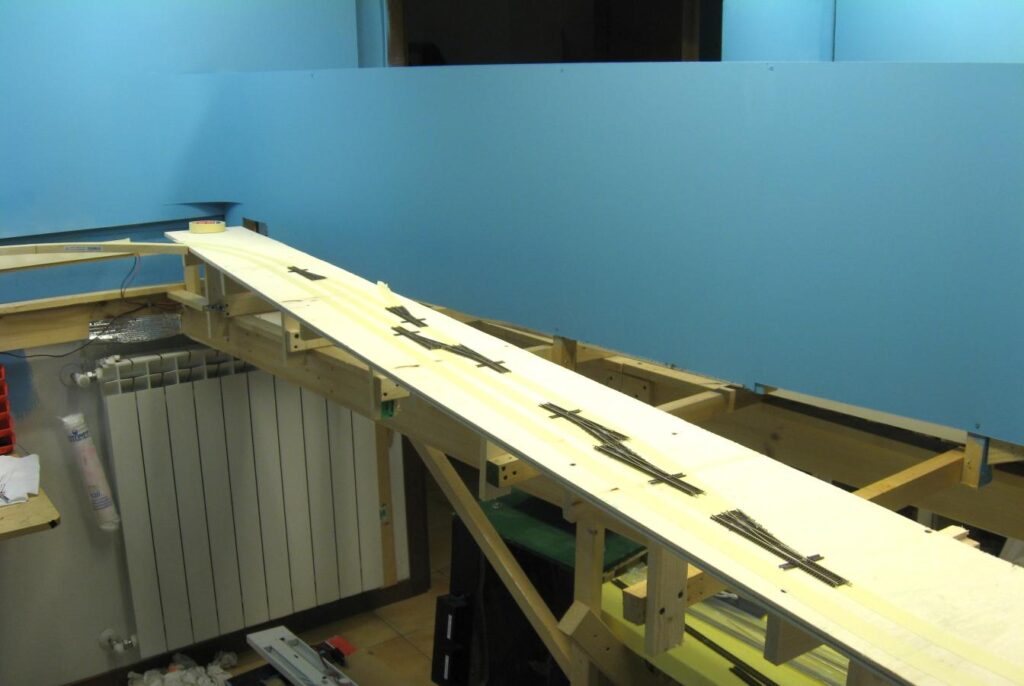
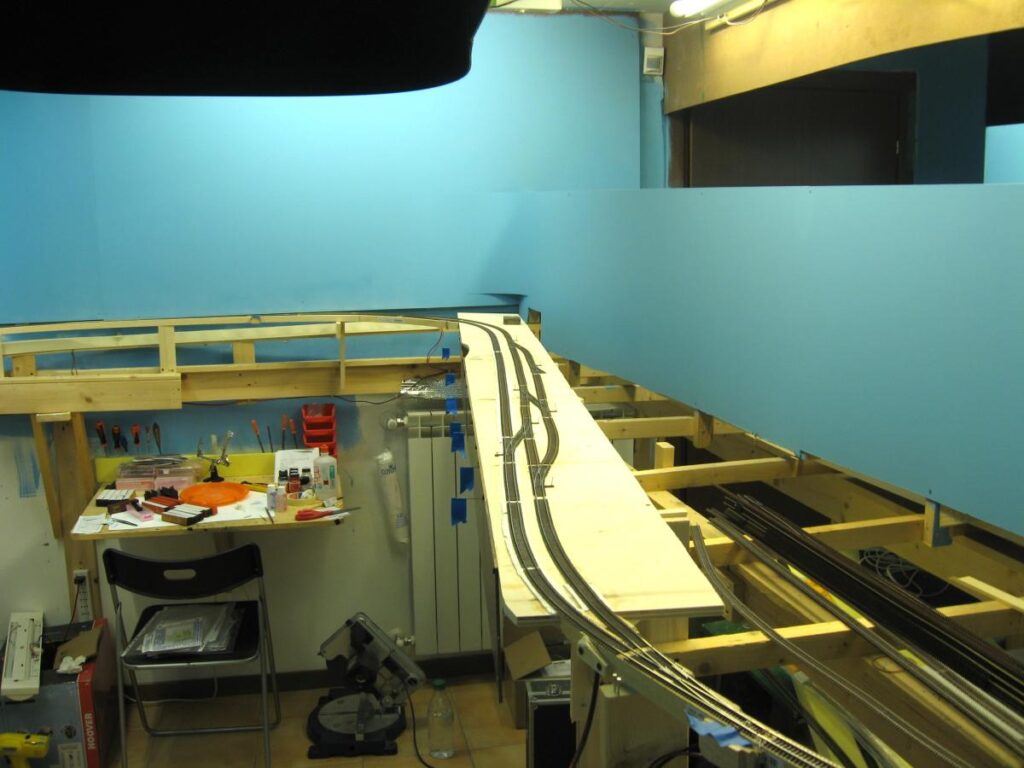
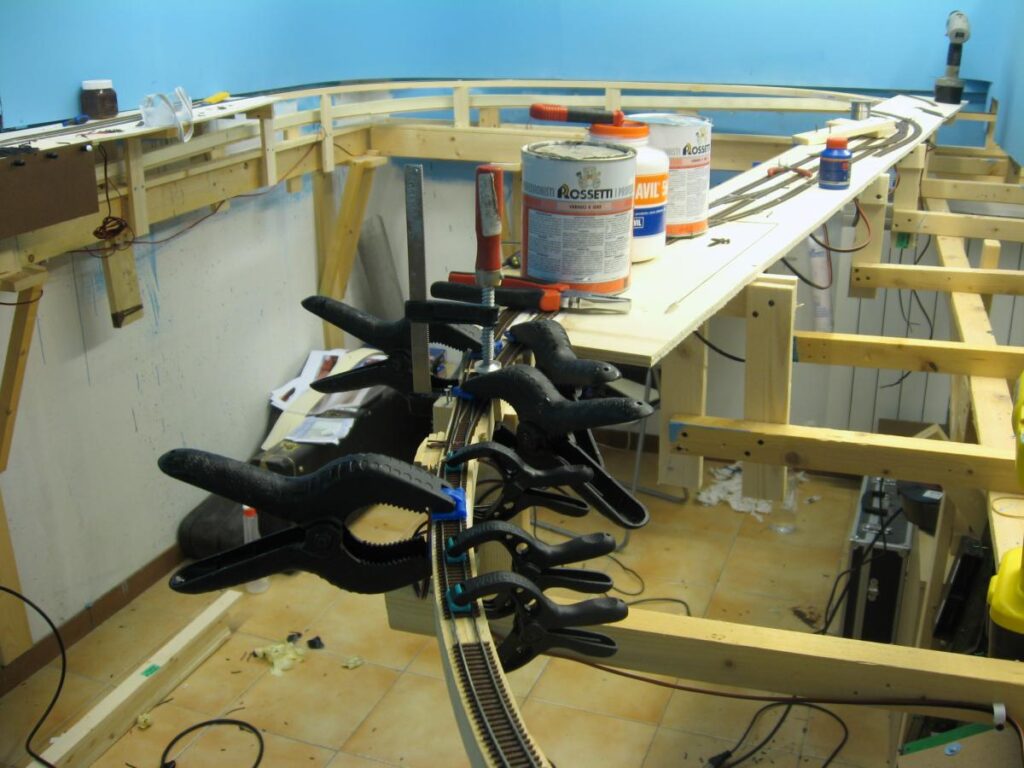
Here was the longest stretch of mainline south of Surf, where the upper deck started its descent towards the lower, staging deck (Surf is on the other side of the backdrop).
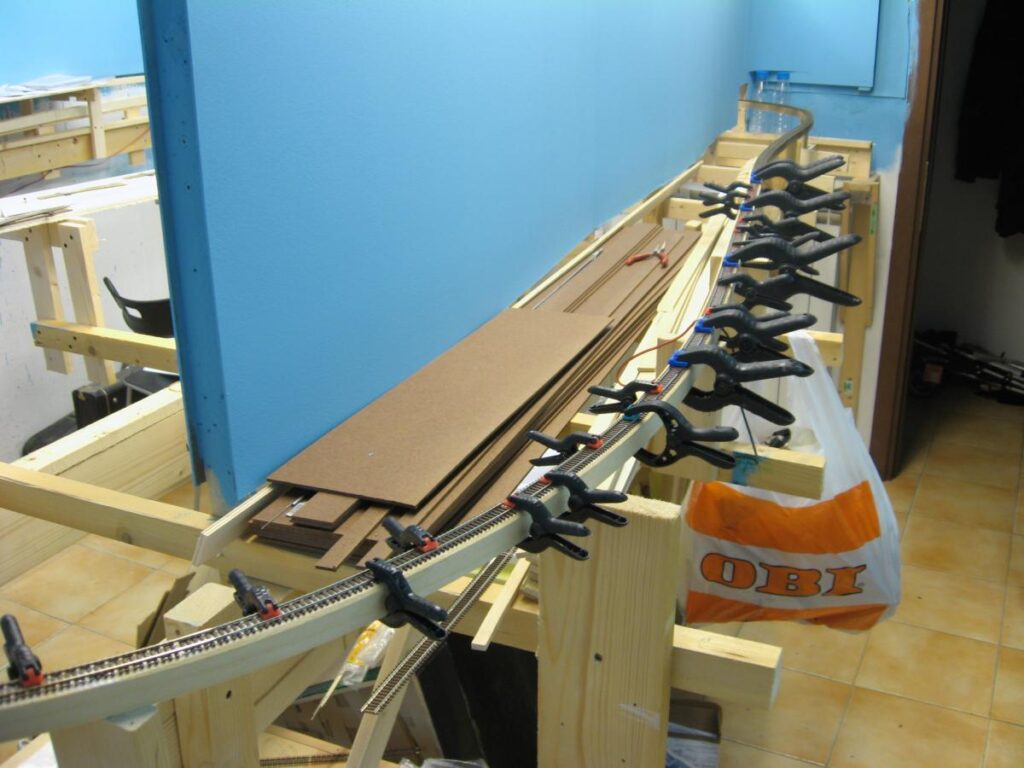
Here is the longest stretch of pure mainline, for railfanning and scenery-building purposes. I scratchbuilt the tunnel portal using cardboard, then painted it with (now discontinued) Polly Scale paint. I detailed it with a few styrene strips.
Terrain
A very fast terrain-forming technique have been used: cardboard strips covered with masking tape, then coated with plaster of Paris.
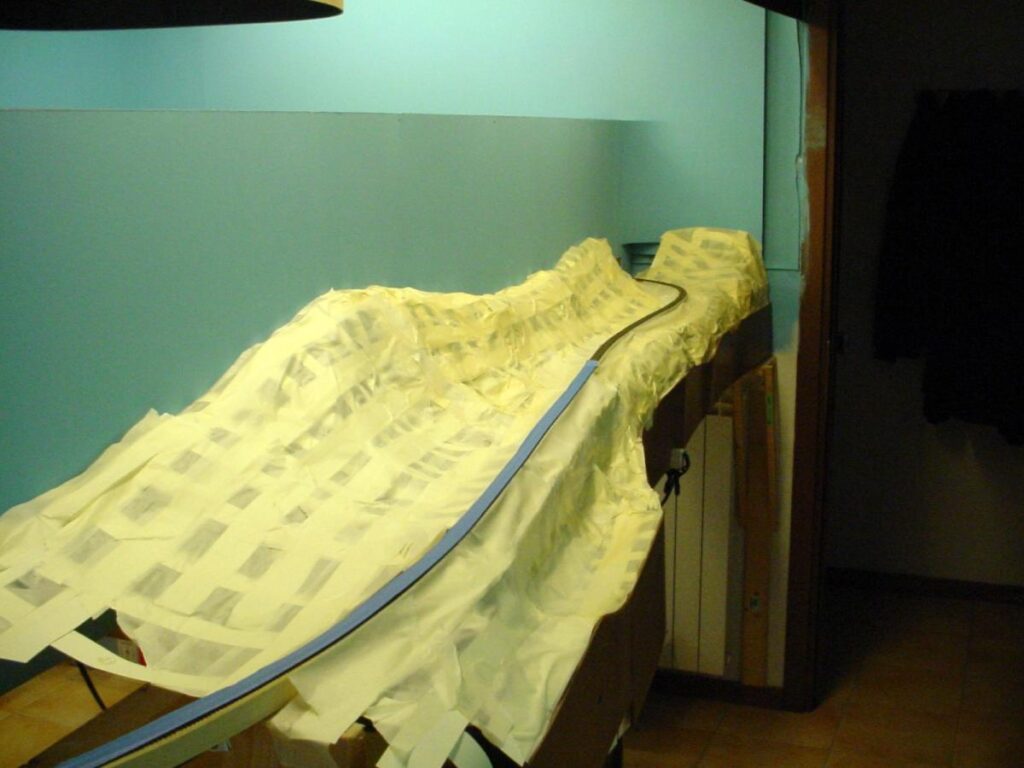
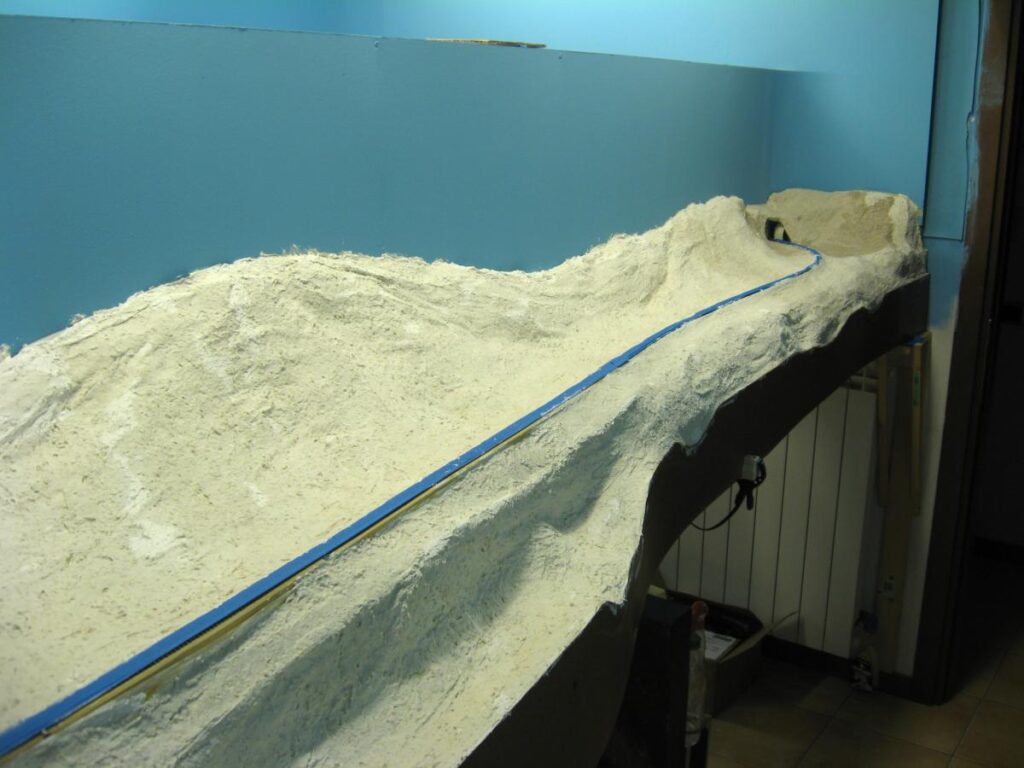
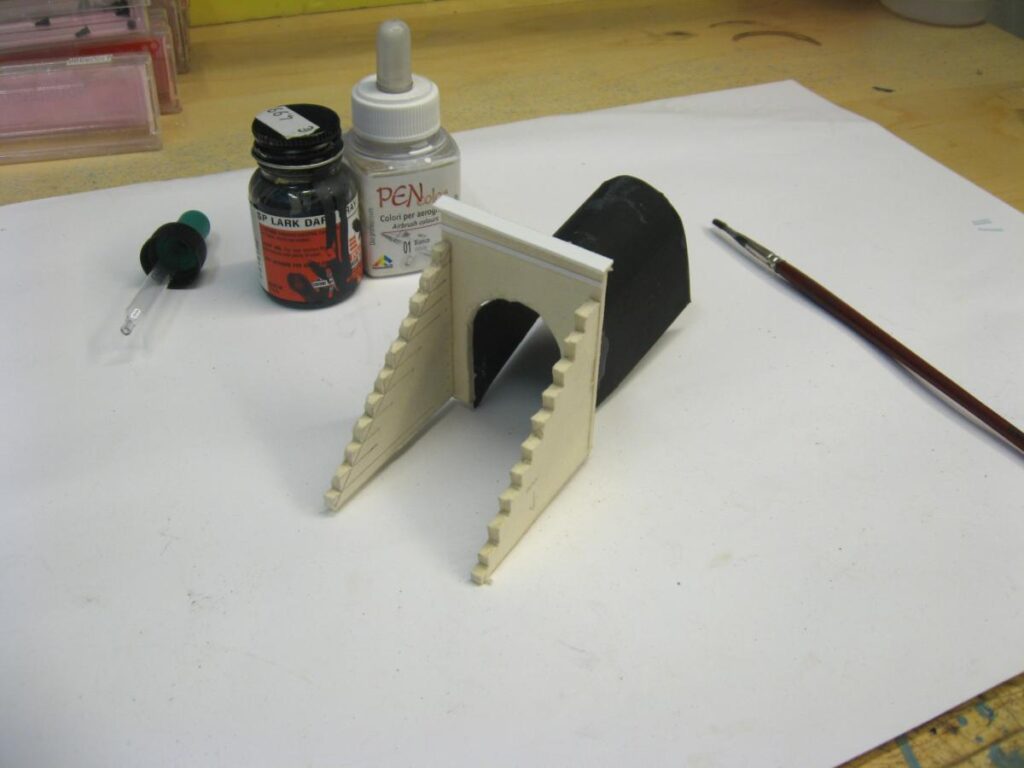
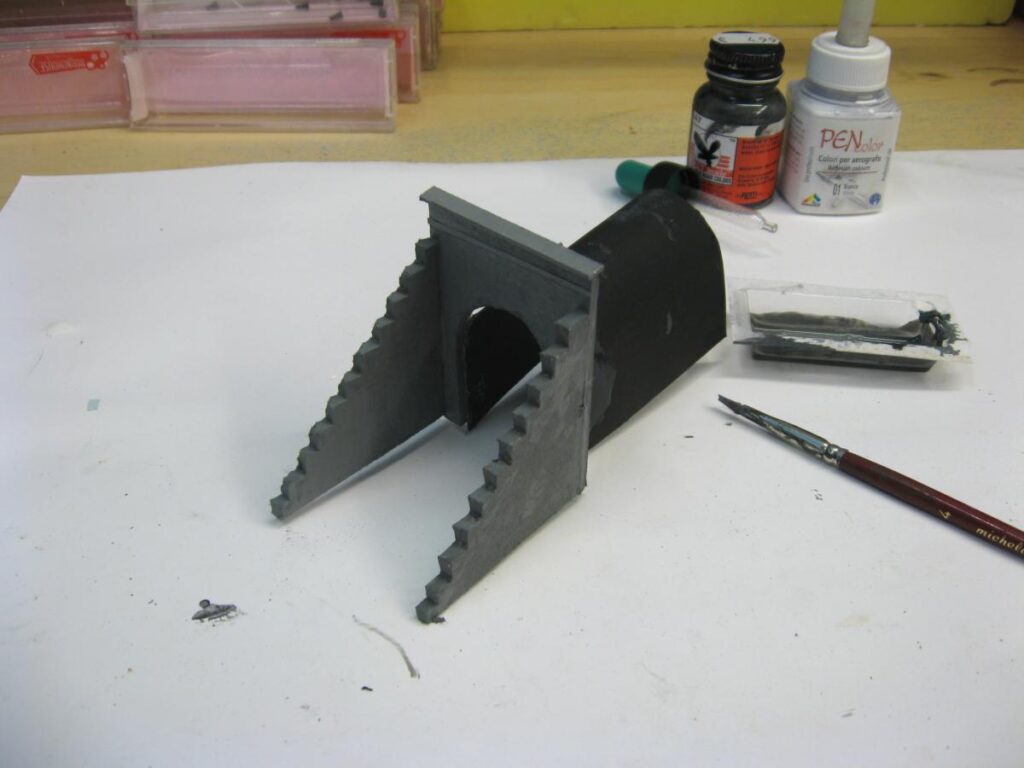
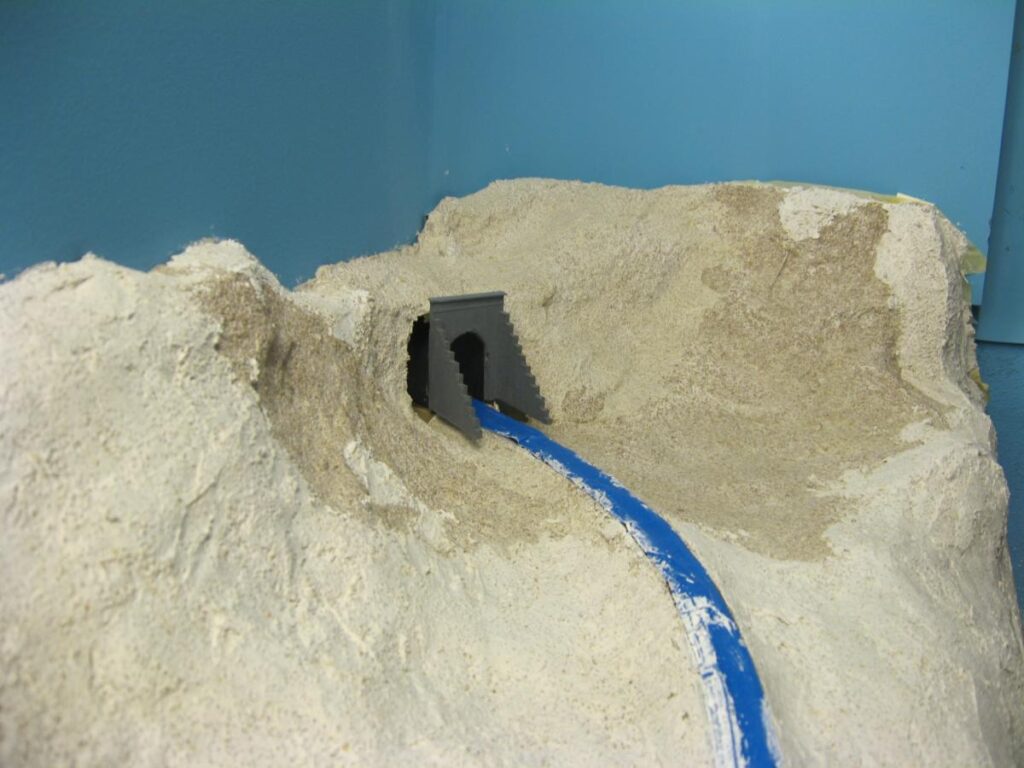
Once the layer of cardboard strips and masking tape, covered with plaster of Paris, was complete, I started painting the terrain a base color and worked on the distant mountains painted on the backdrop.
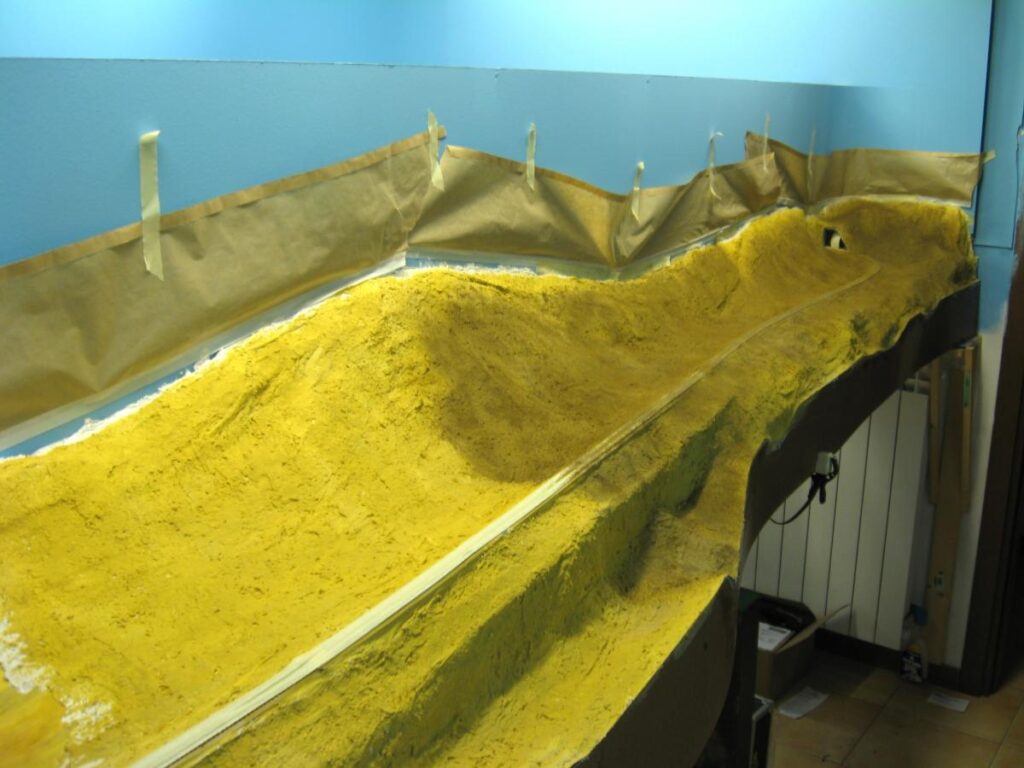
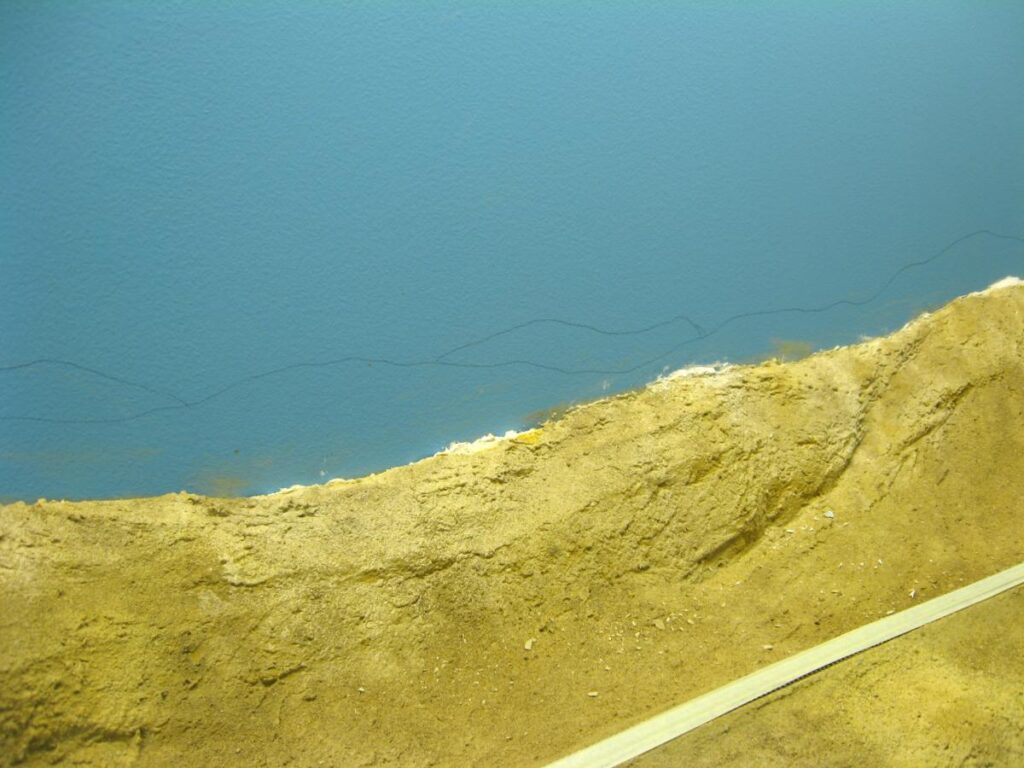
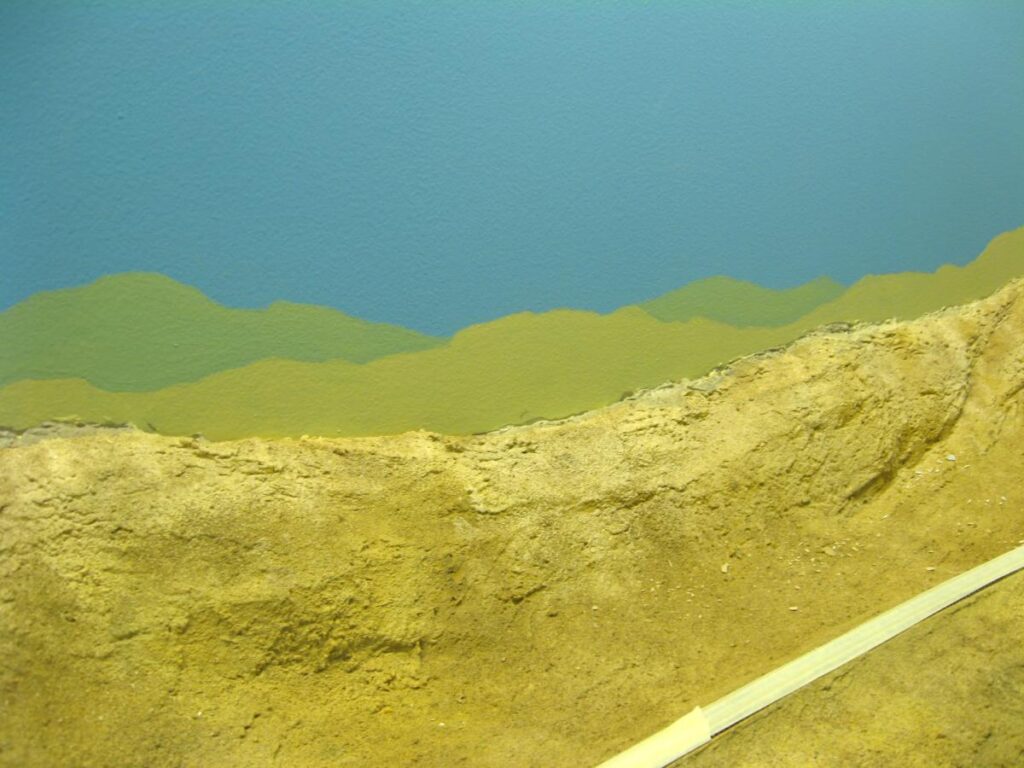
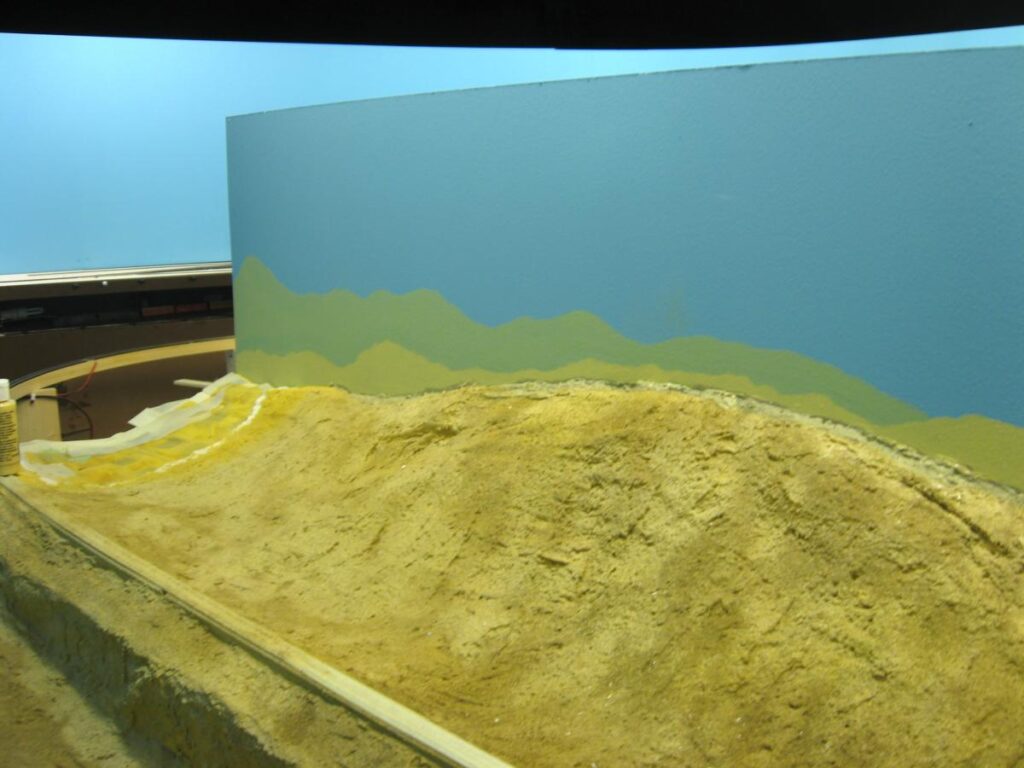
Operating Session With Trackwork Complete
Between scenery work, I hosted another operating sessions. Here you can see the Guadalupe Yard with manual turnout controls completed, featuring some stylish knobs. The white knobs indicate mainline turnouts, so that the operators knows they are dealing with potentially “dangerous” turnout throws.
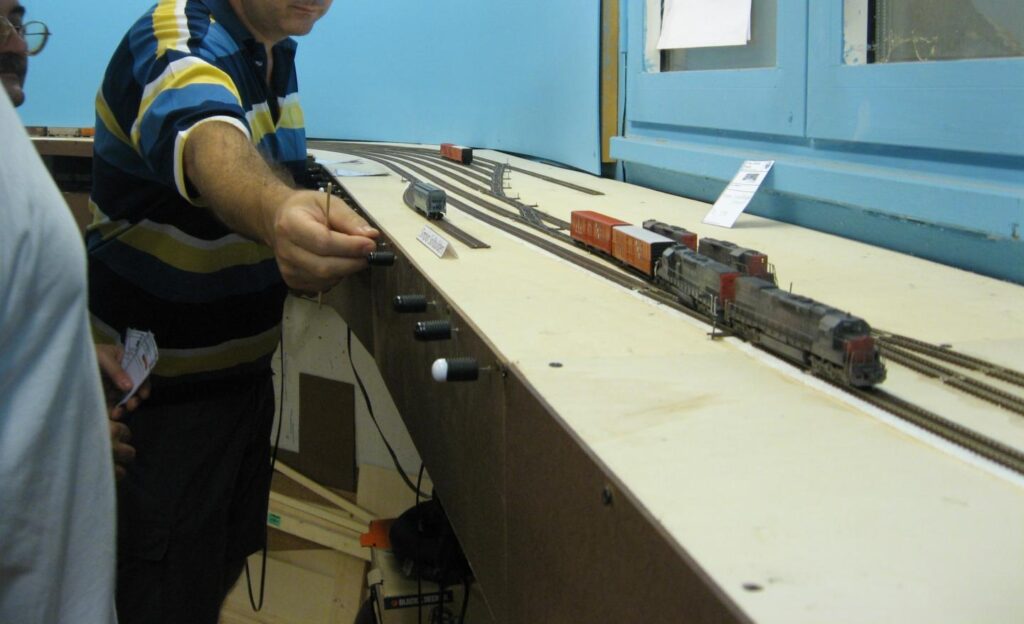
For this session Surf trackwork was complete, here you can see the Lompoc Local taking the (stub-ended) branch line.
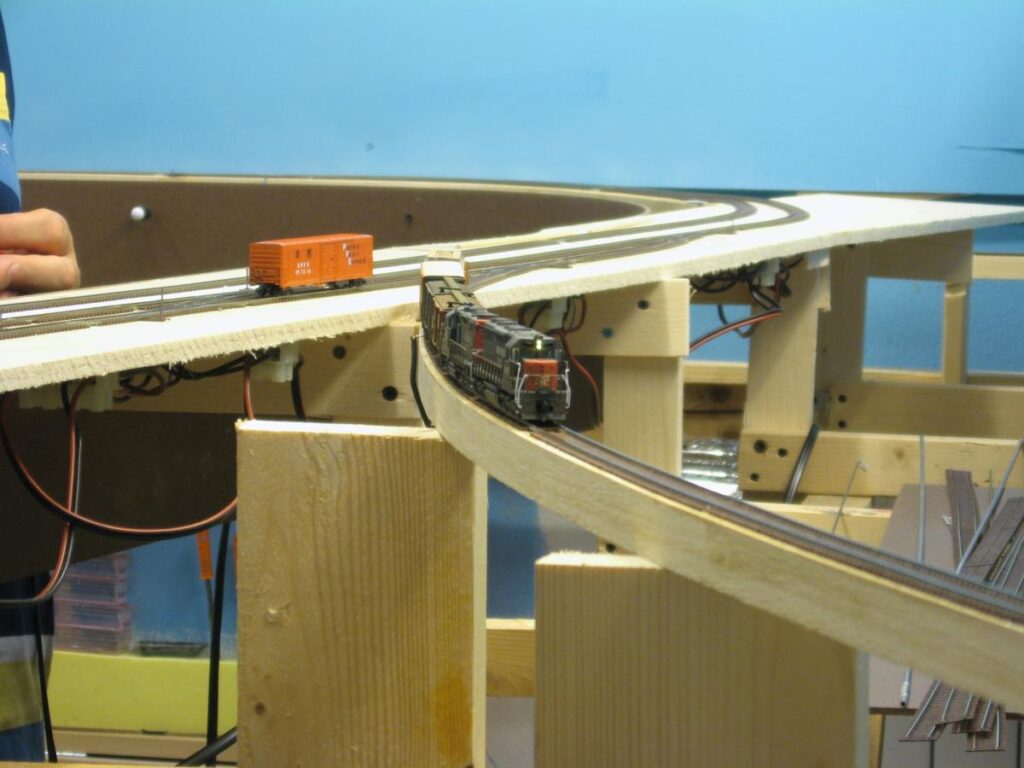
Scenery
Eventually, some scenery! After the operating session, I was motivated to start working on the long stretch of main line, adding ballast, static grass and some bushes/trees. I also used a strip of wood cut in small pieces, to create a fence.
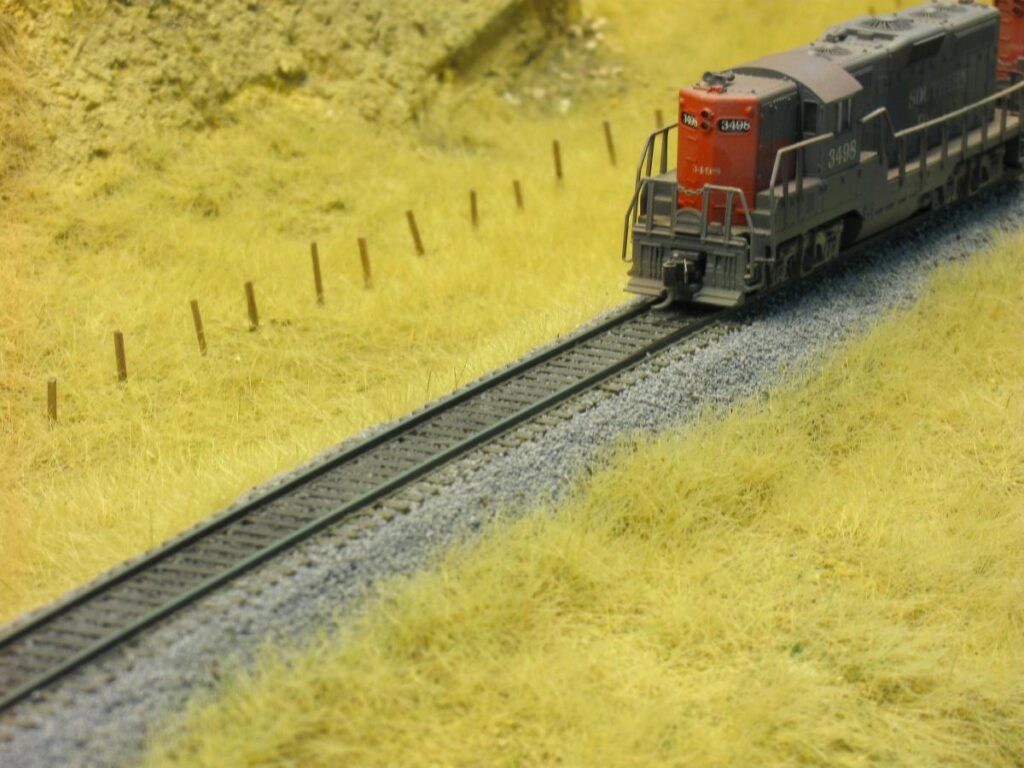
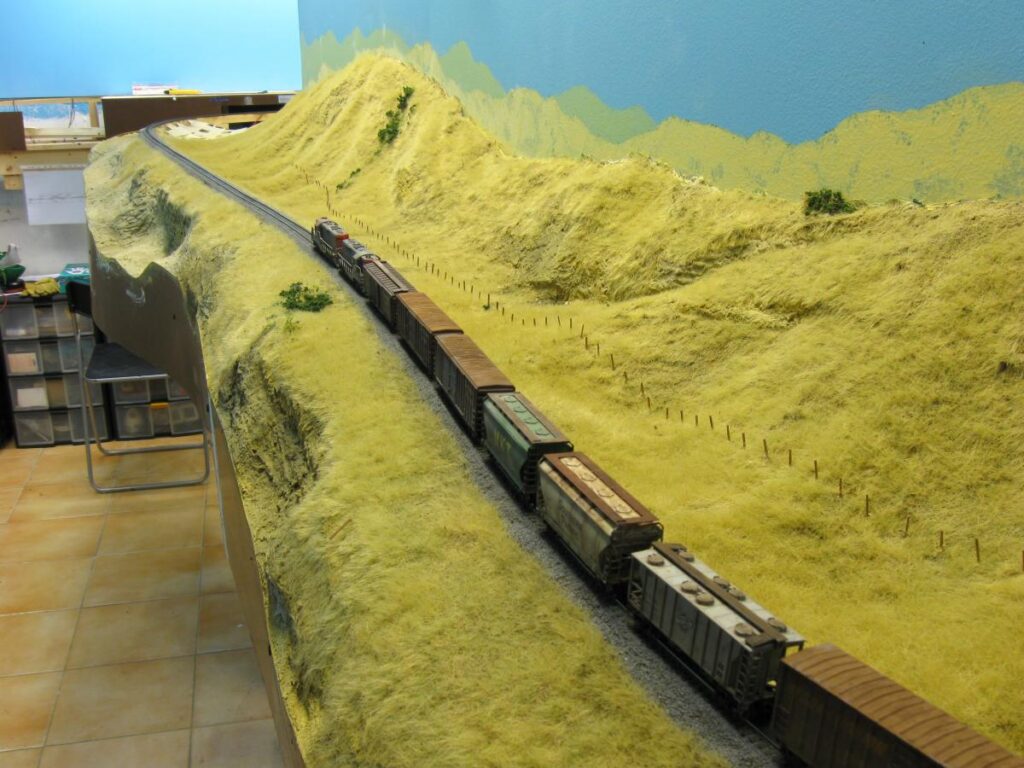
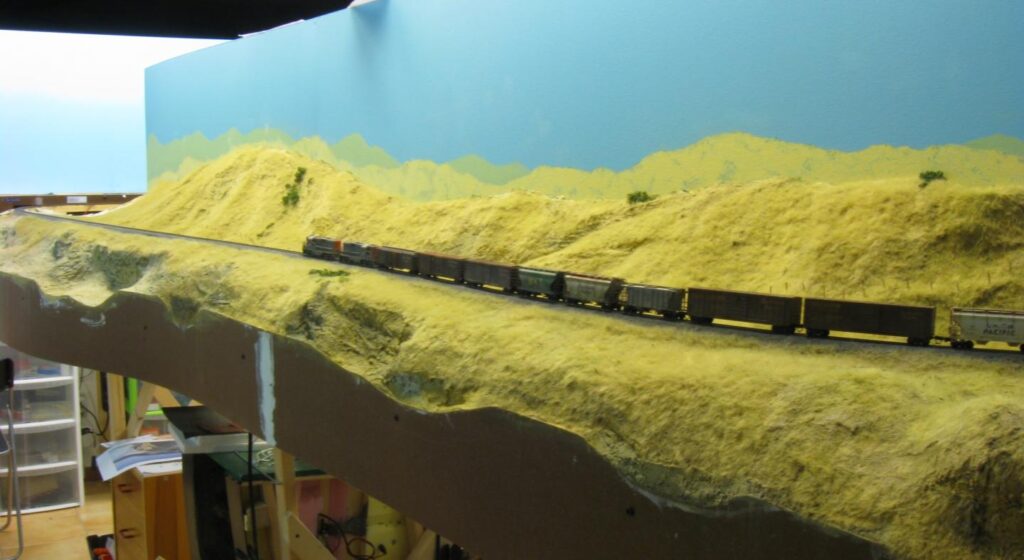
I also weathered the tunnel portal.
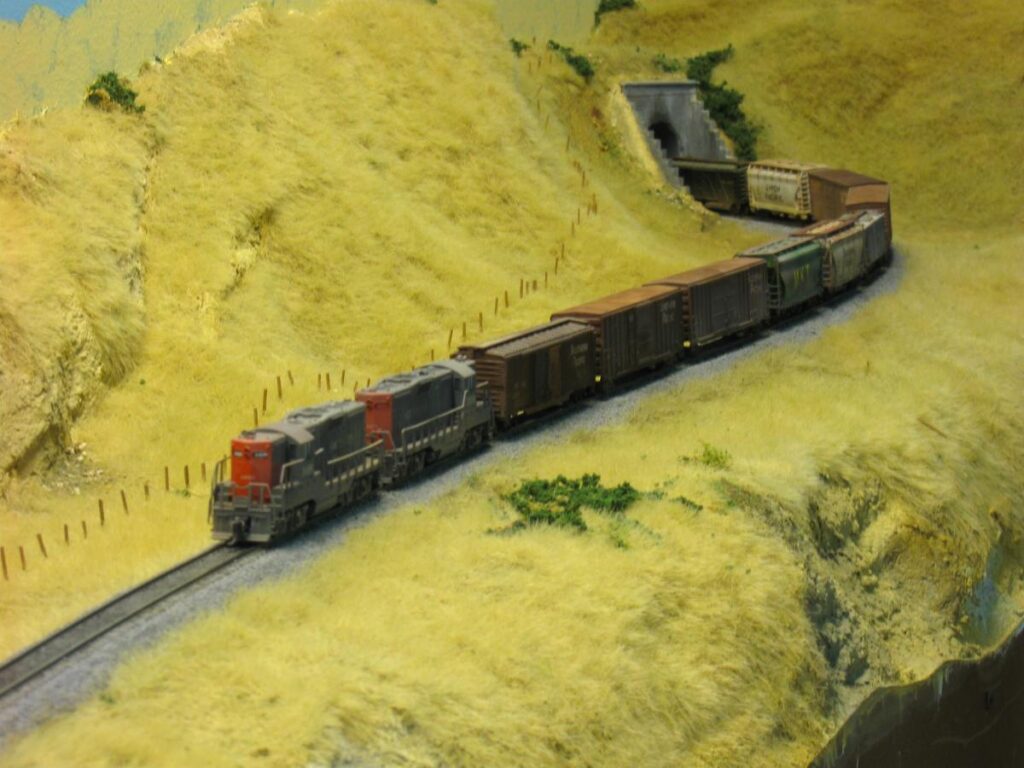
After that I finished airbrushing all the tracks with Polly Scale Railroad Tie Brown.
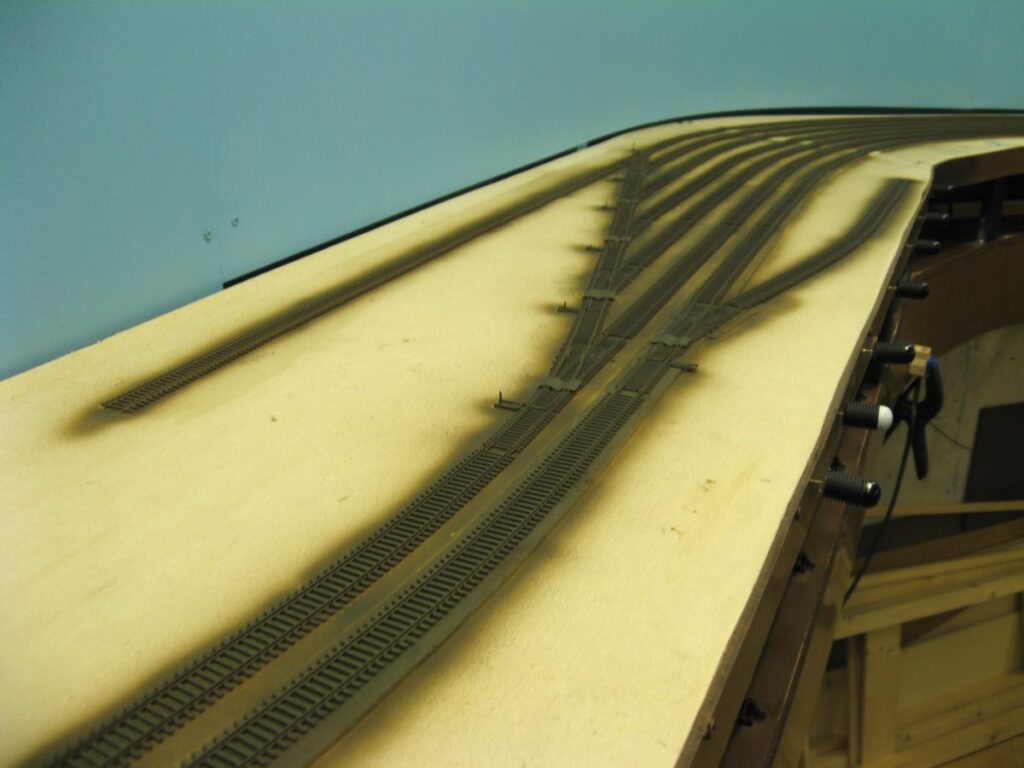
Seeing the mainline portion come to life with some scenery motivated me to finish the scene.
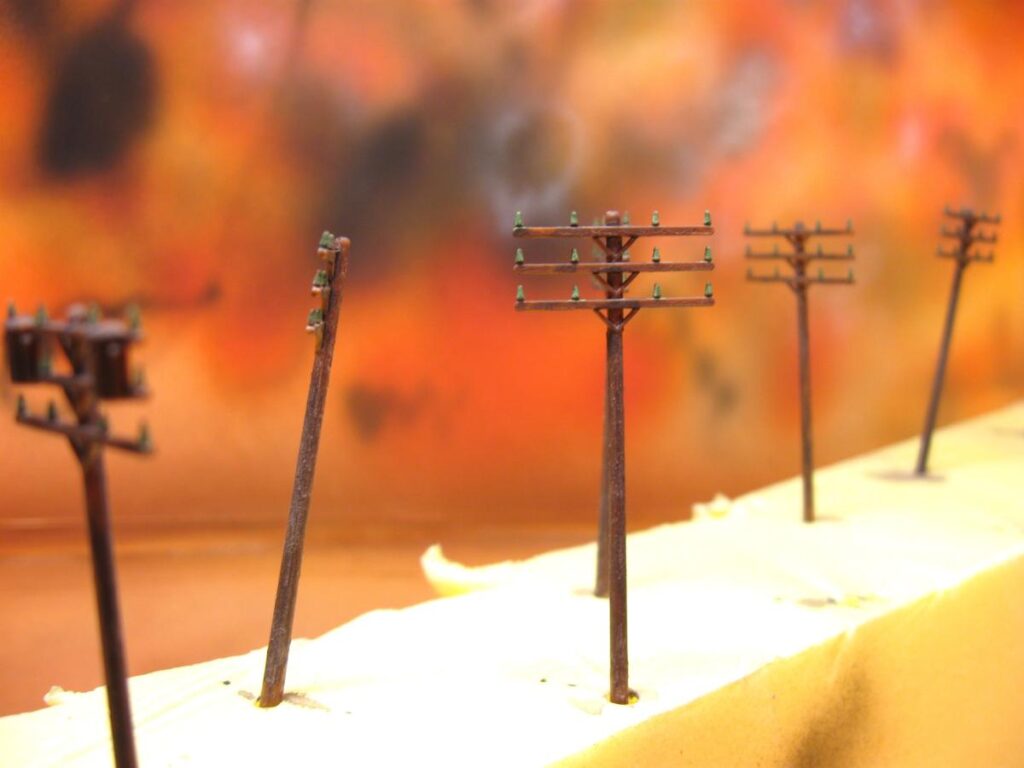
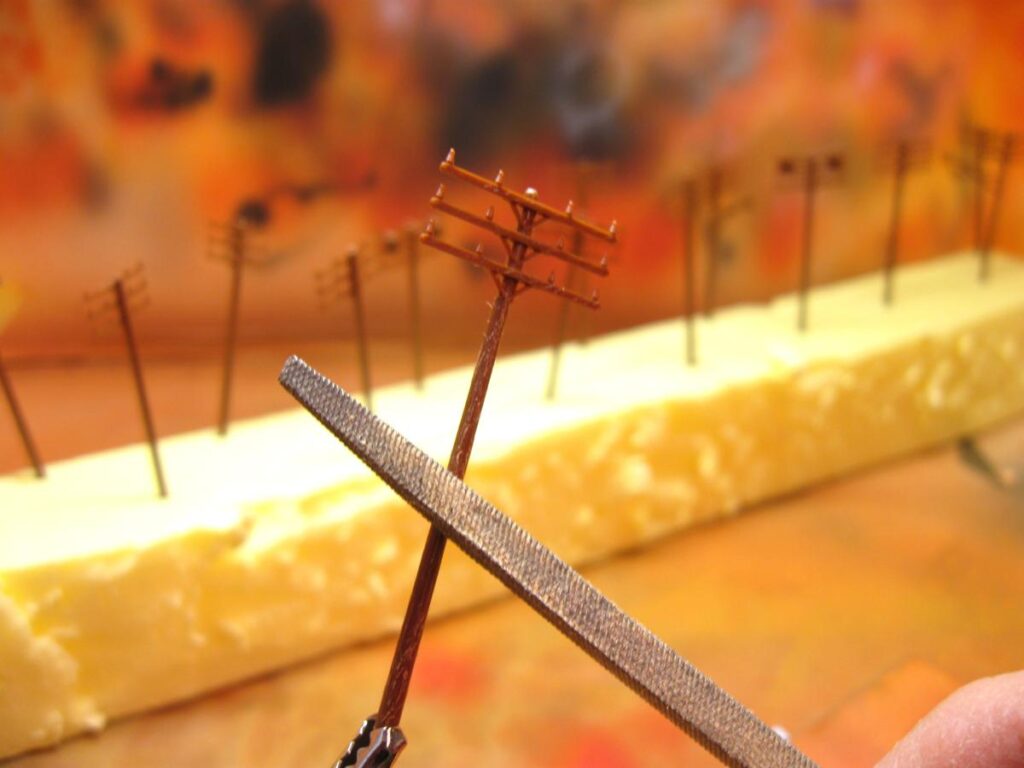
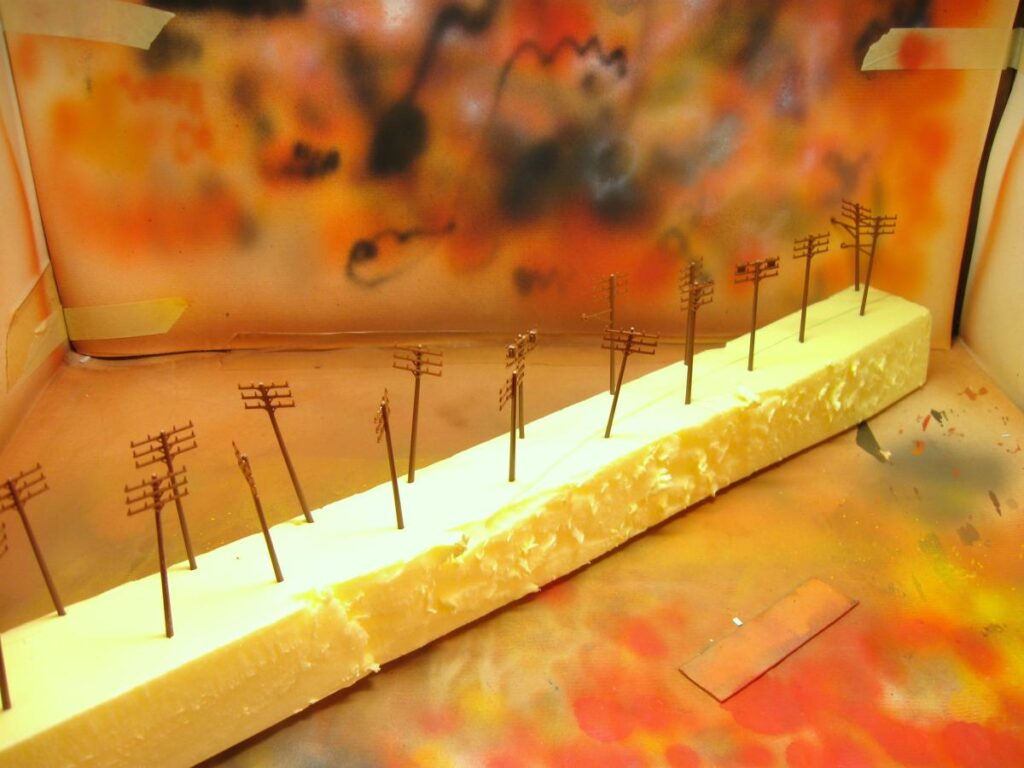
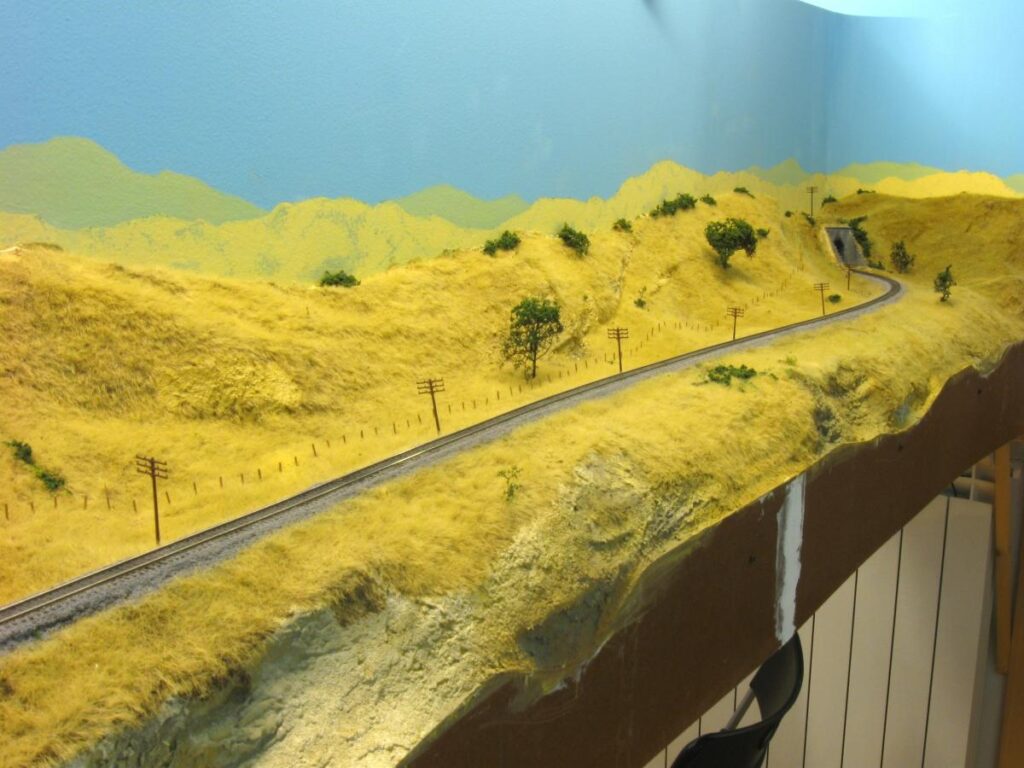
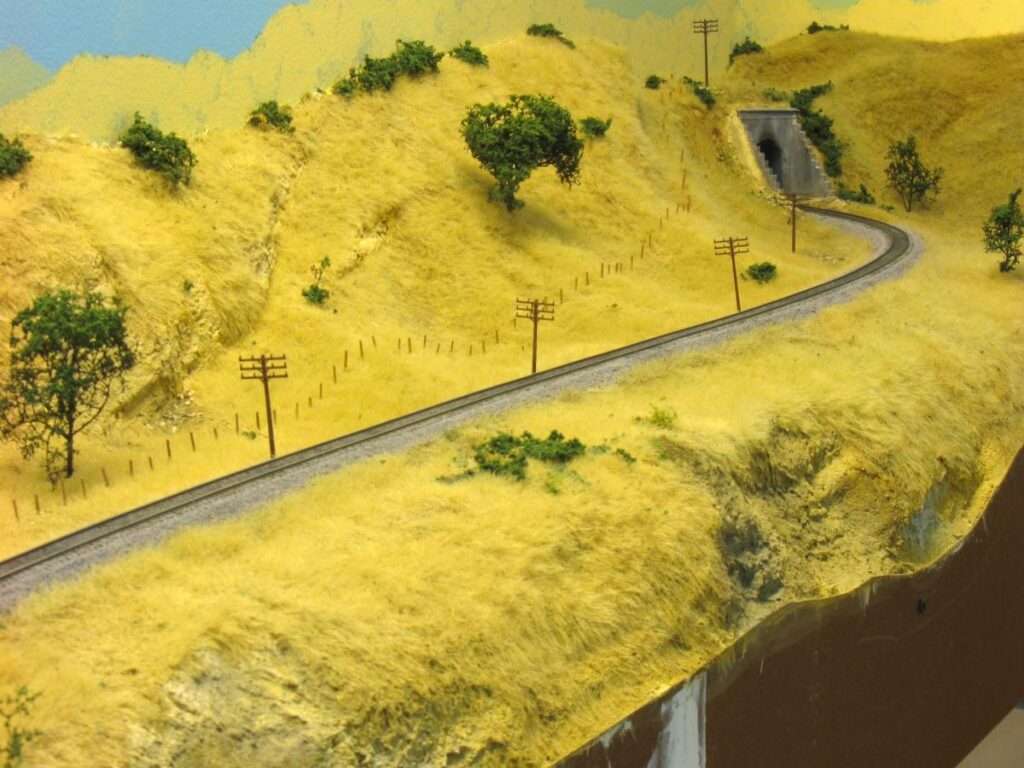
Did I mention I love Tunnel Motors? 😎
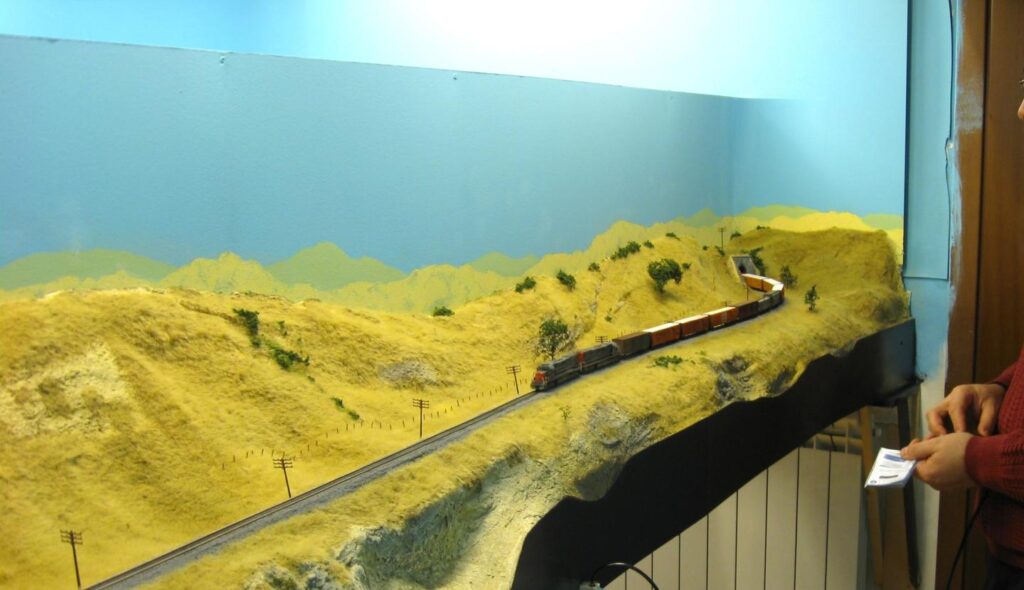
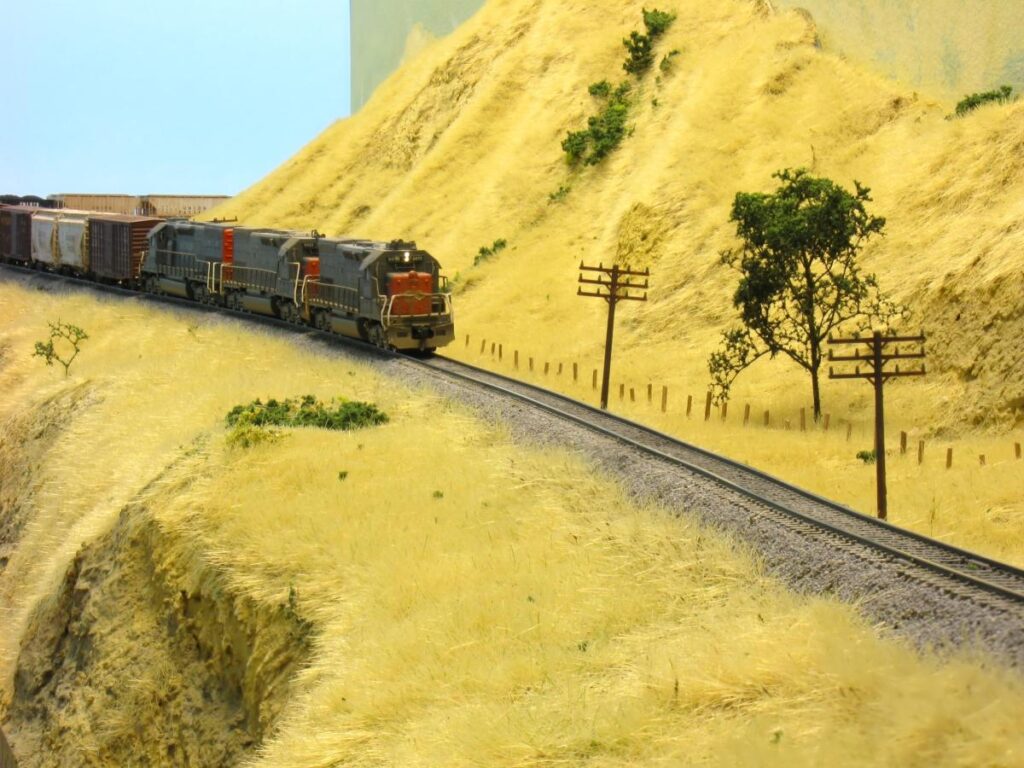
After another operating session, I worked on the Callender area to add more scenery. I used the same cardboard strips and masking tape technique, mixing it with a more traditional foam carving.
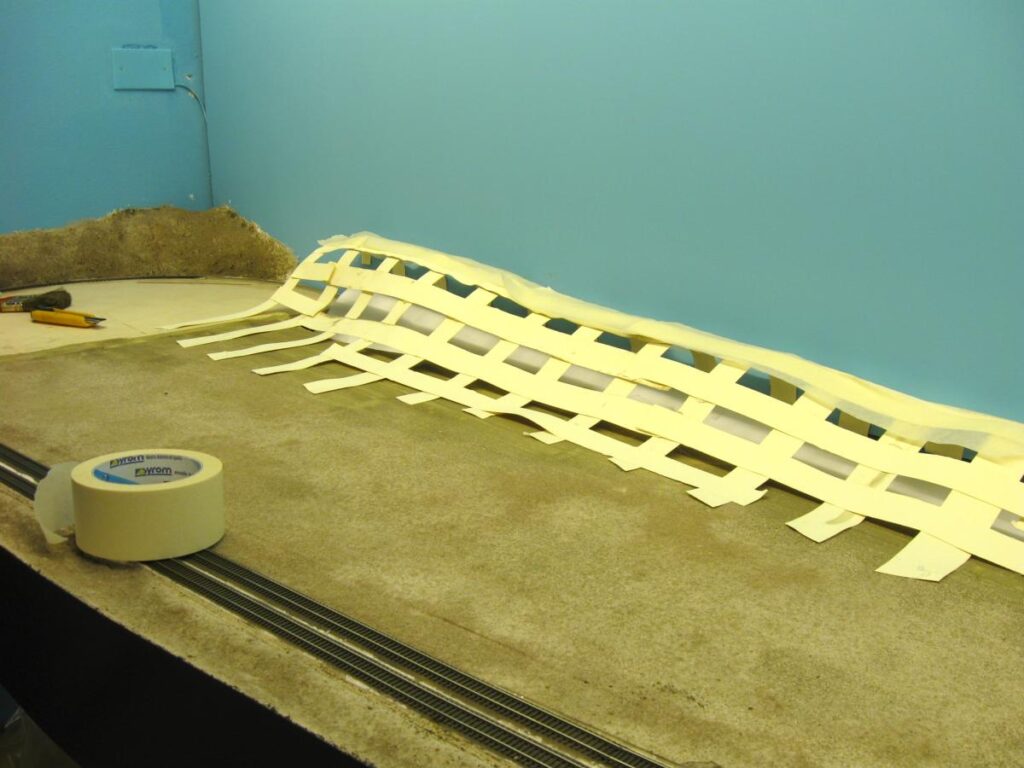
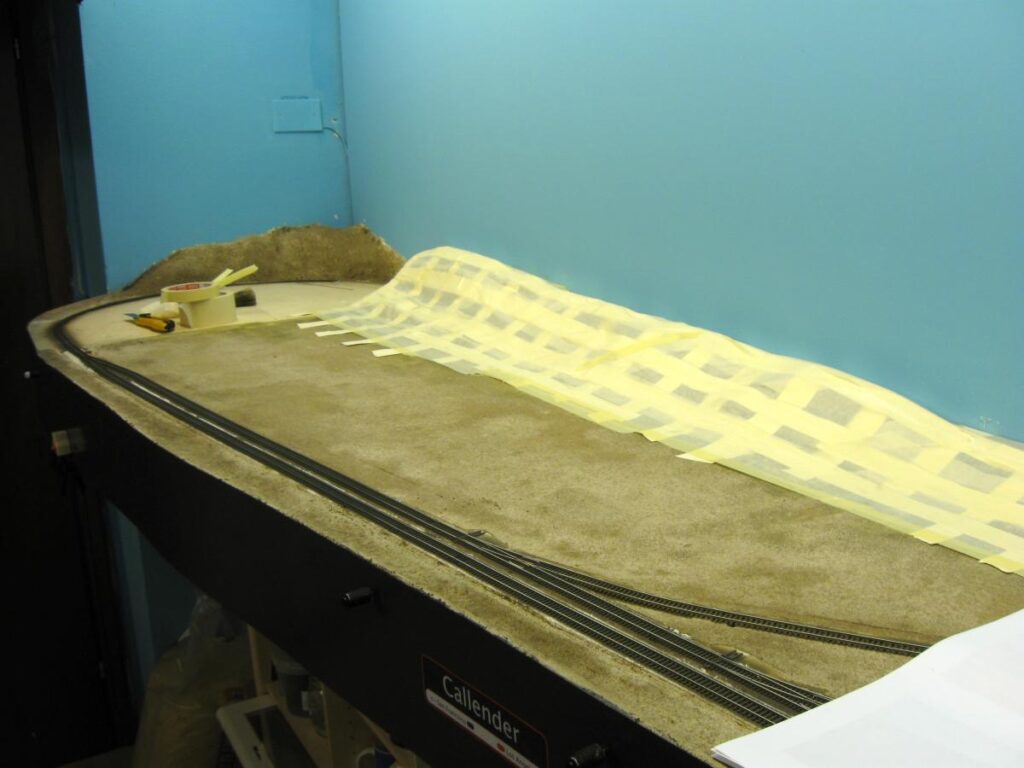
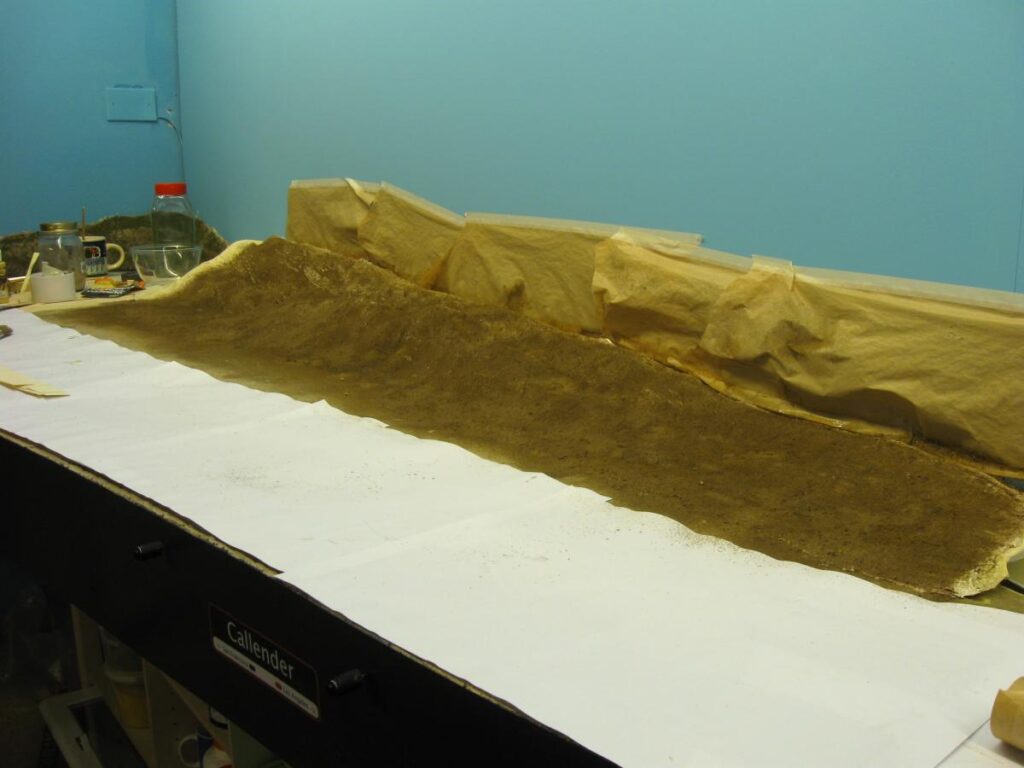
The idea here was to hide the sharp U curve.
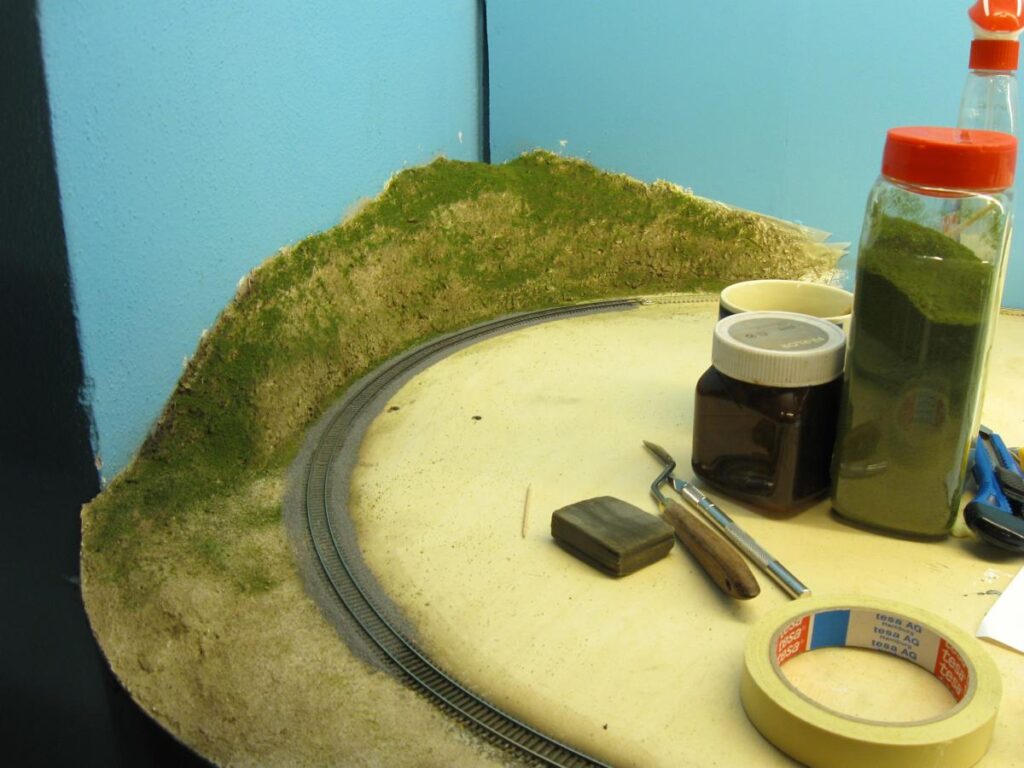
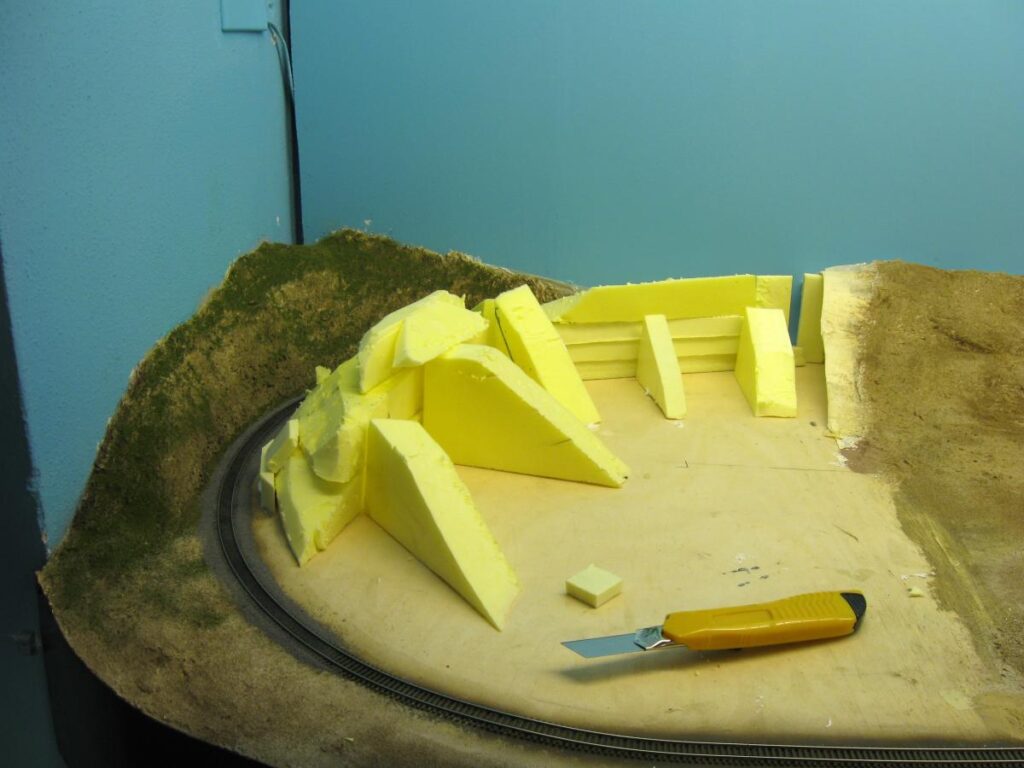
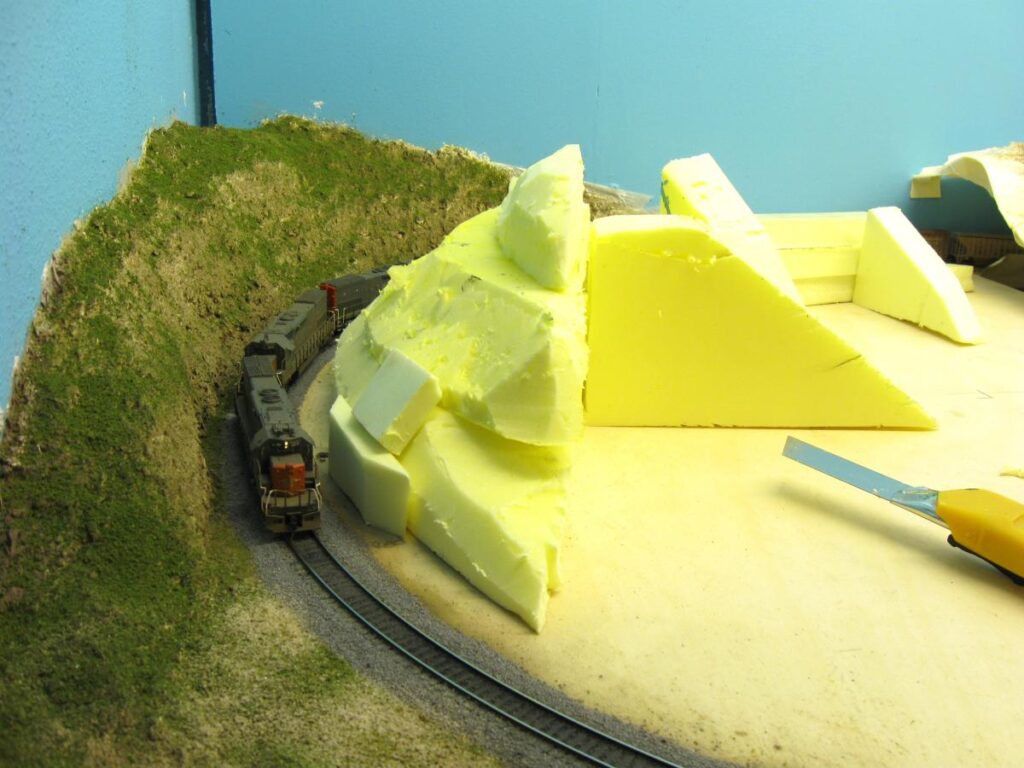
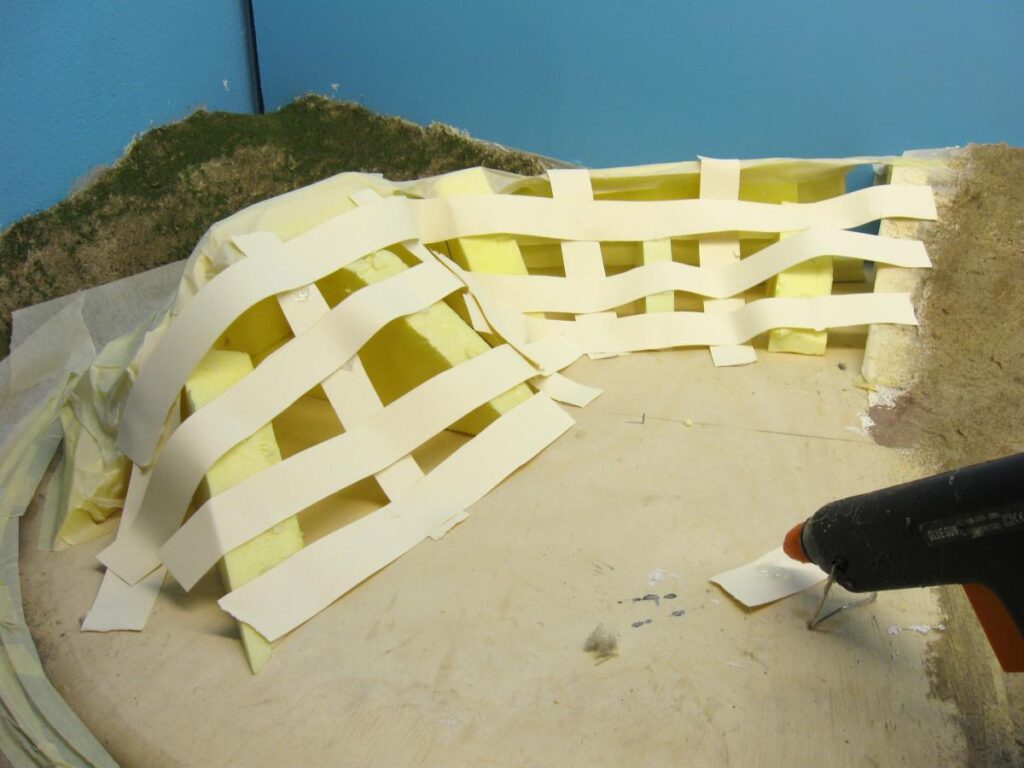
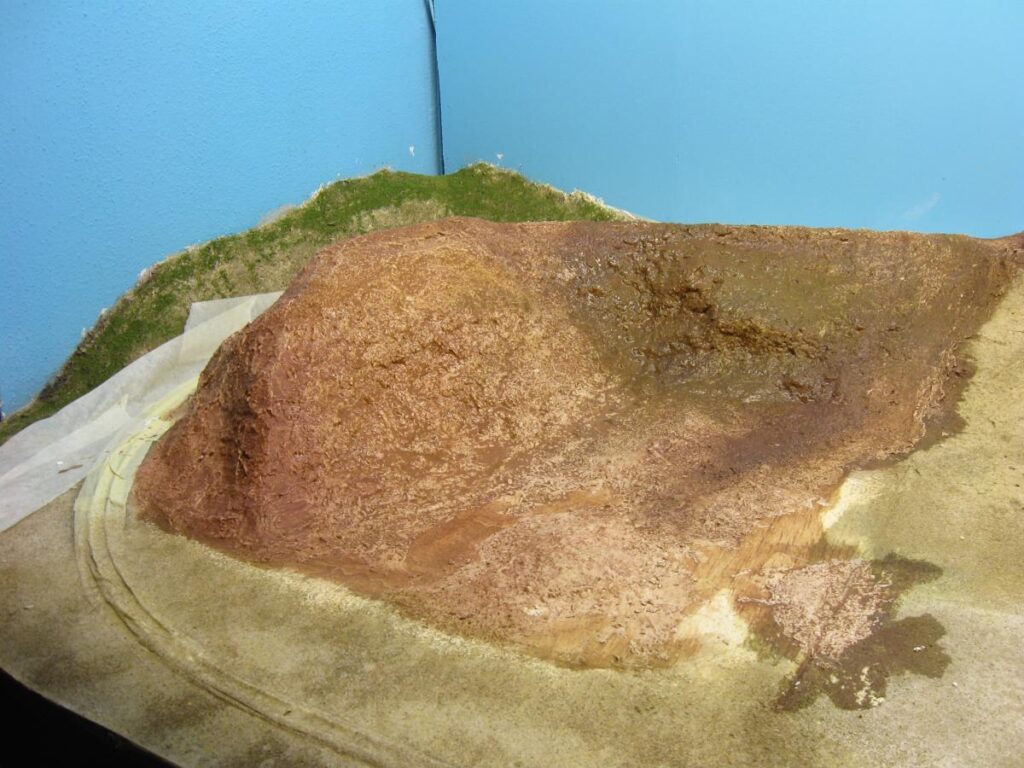
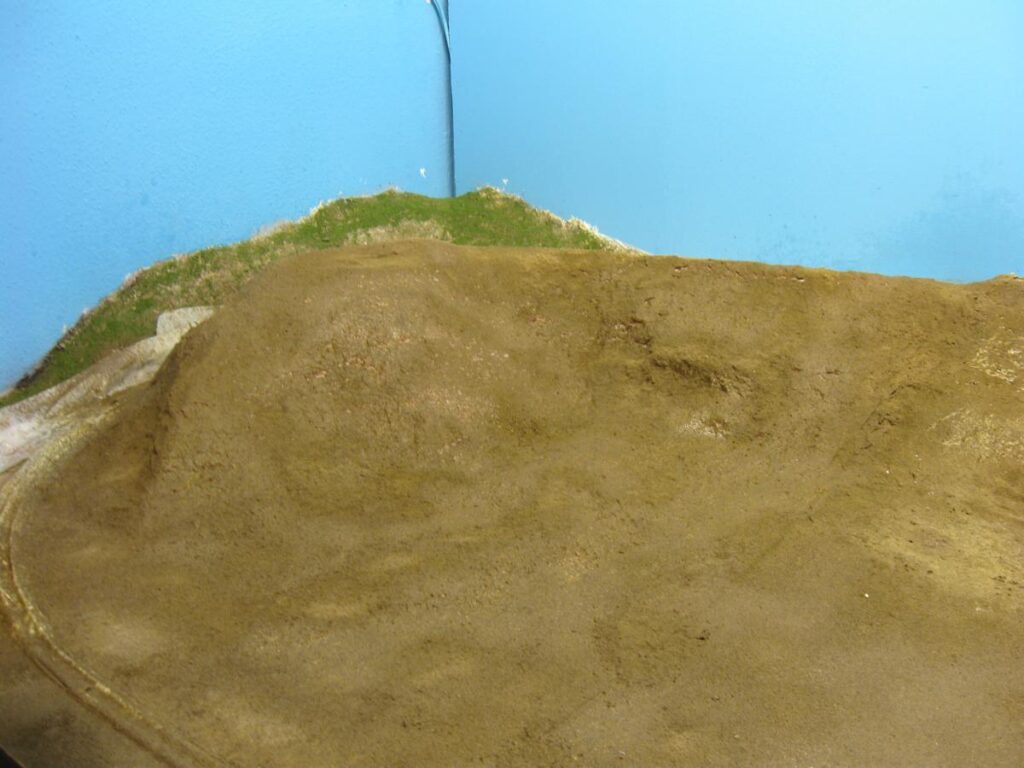
Before moving on with vegetation on the Callender area, I held another operating session. A few 89′ (still unweathered, unlettered) flatcars appeared on the layout, I built a few using N Scale Kits.
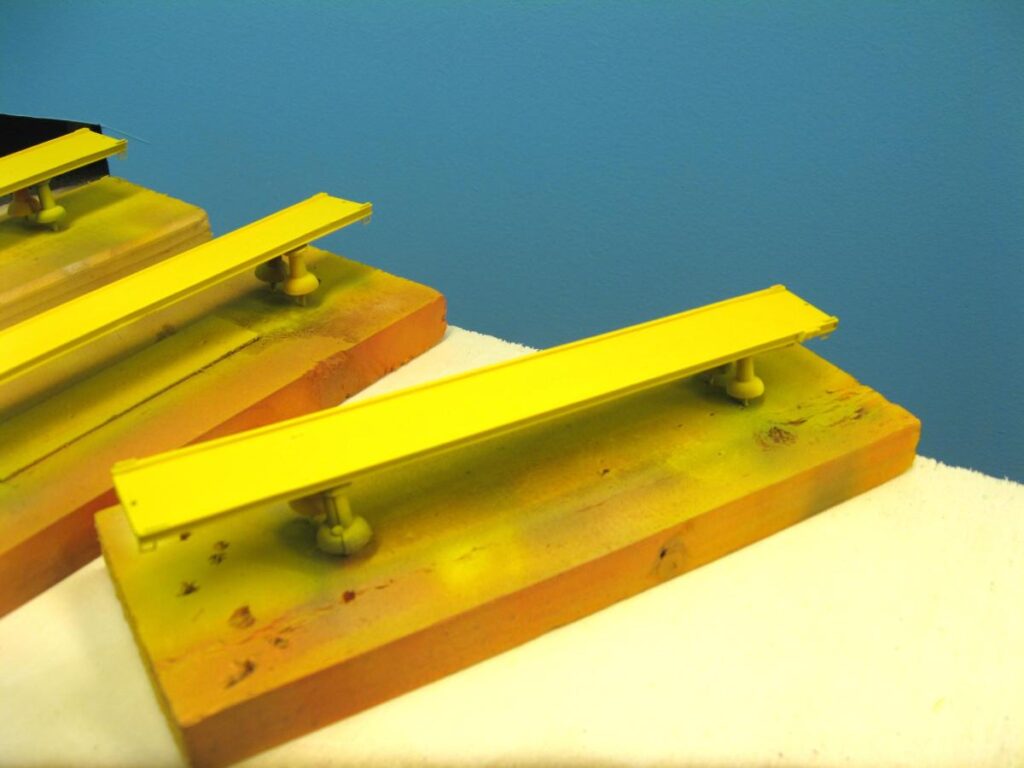
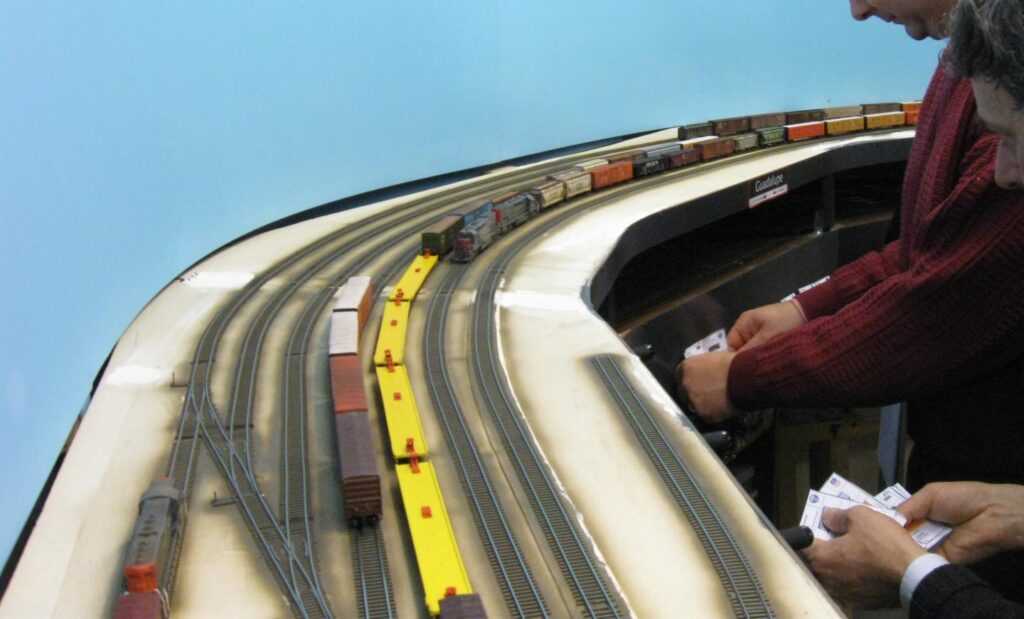
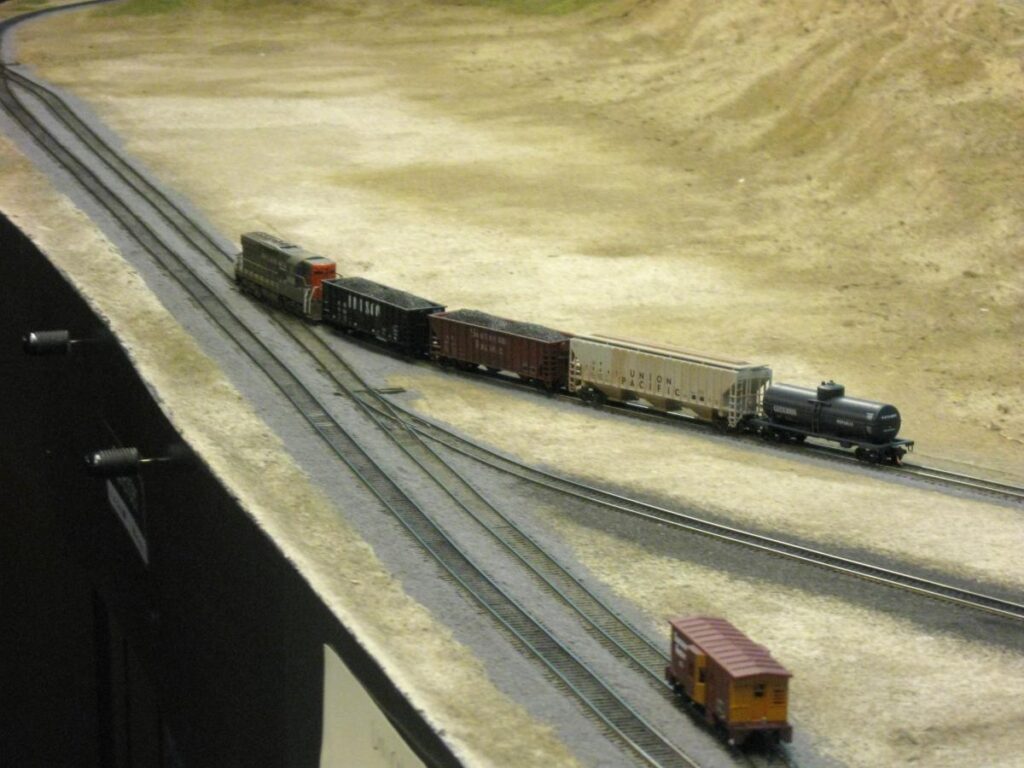
Some temporary car card holders made of plastic and tape.
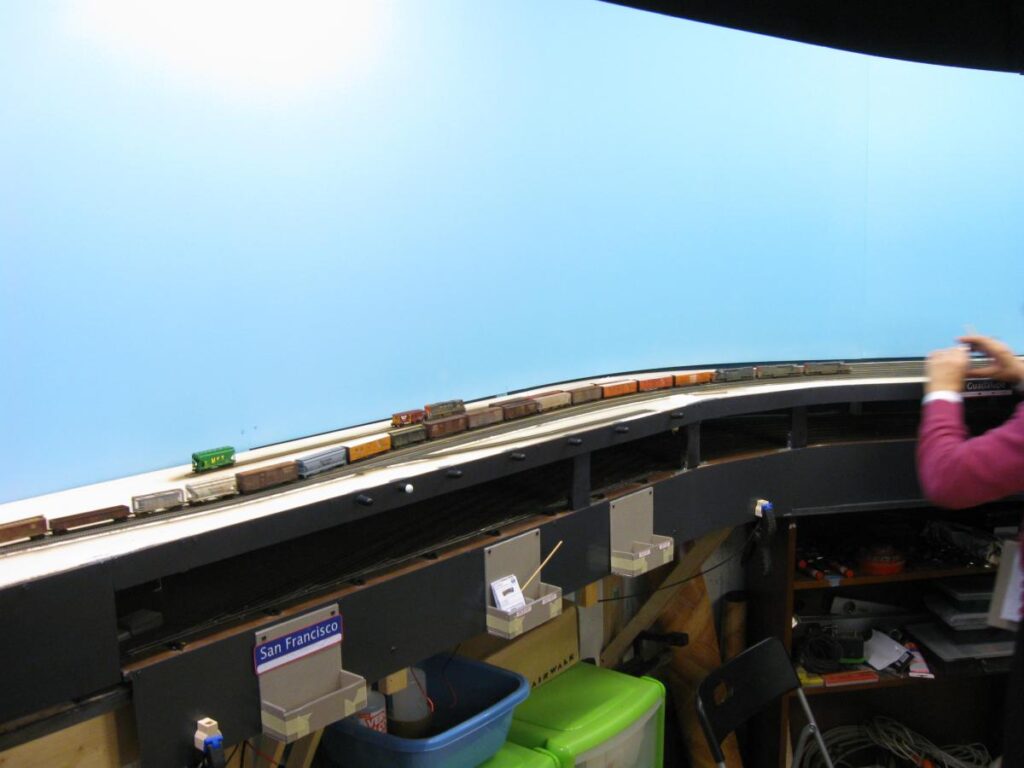
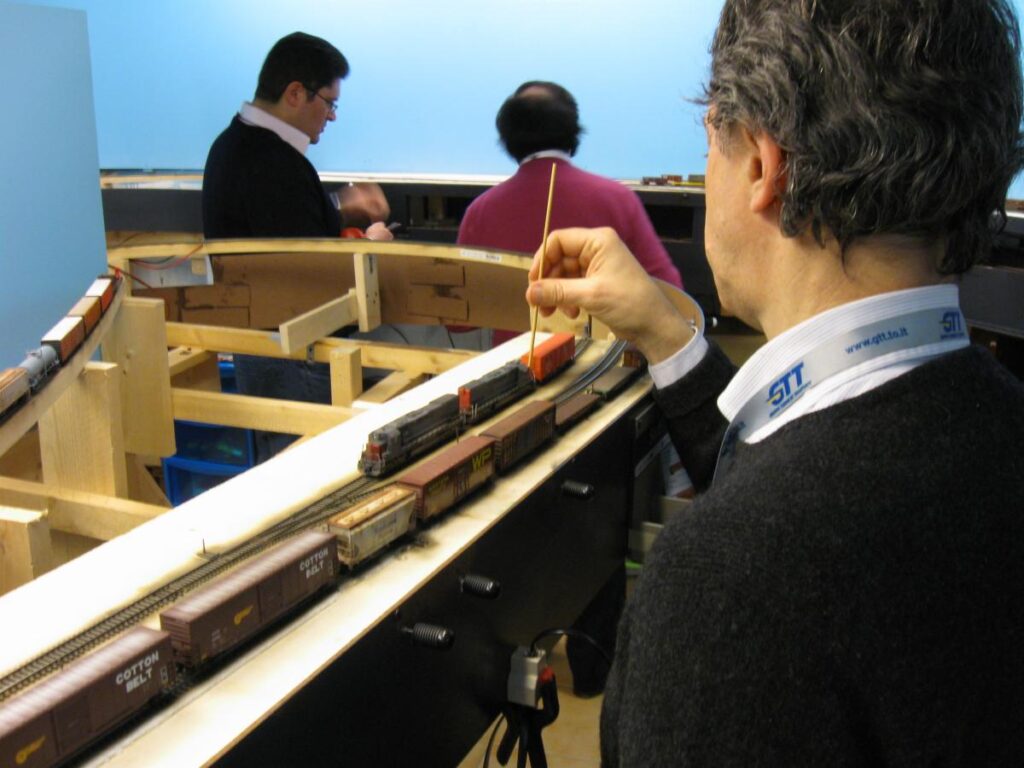
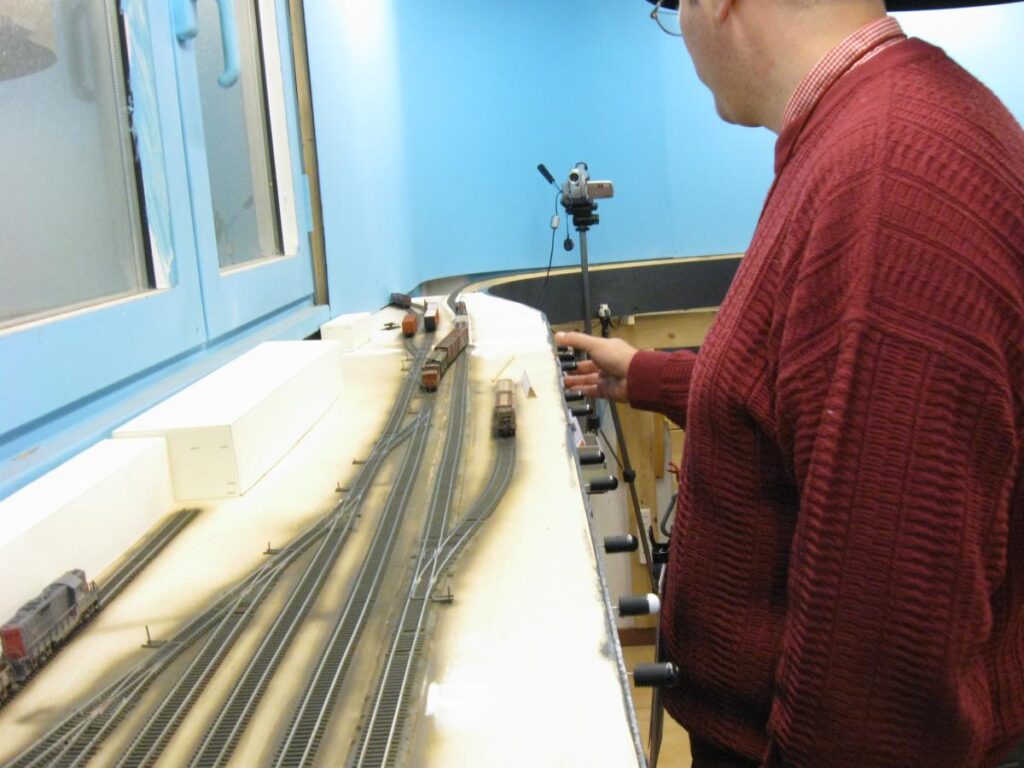
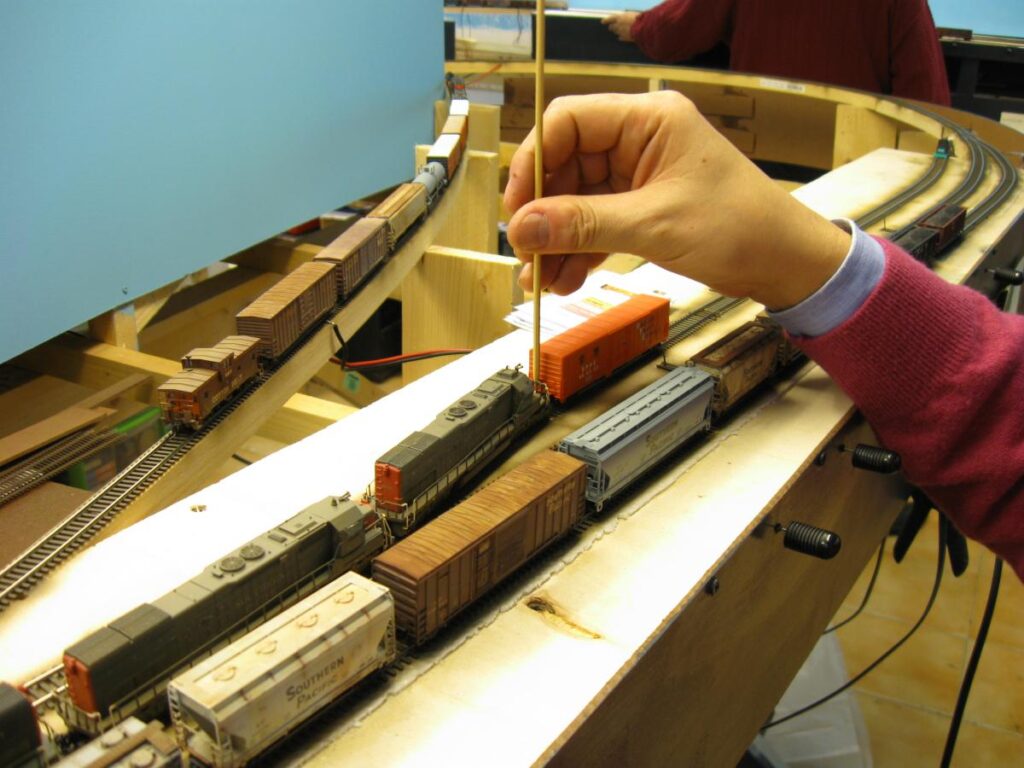
After what was the last operating session held on the SP Coast Line in N Scale, I worked on the Callender area, completing the scenery.
I used the Noch static grass applicator and some golden and green grass.
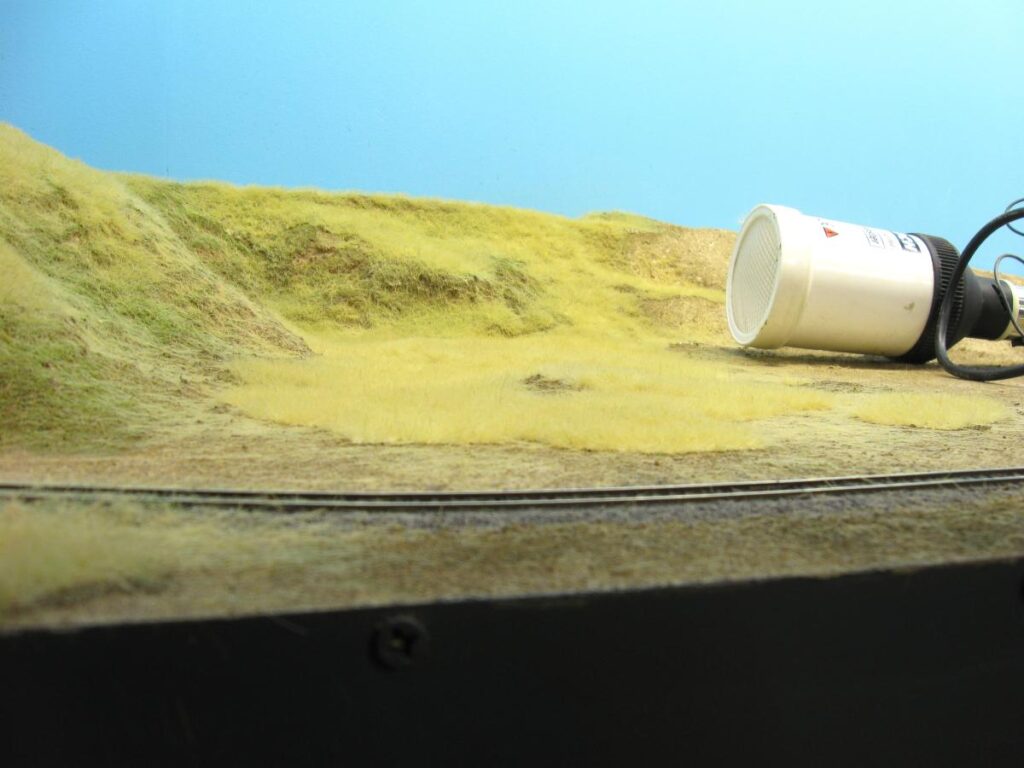
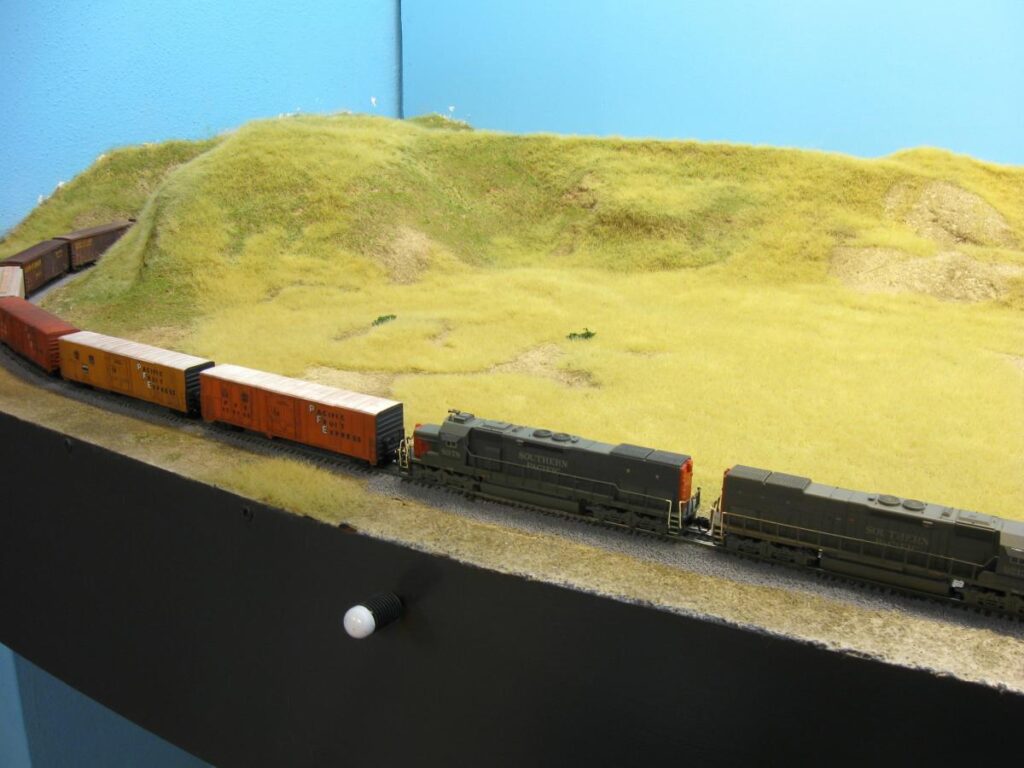
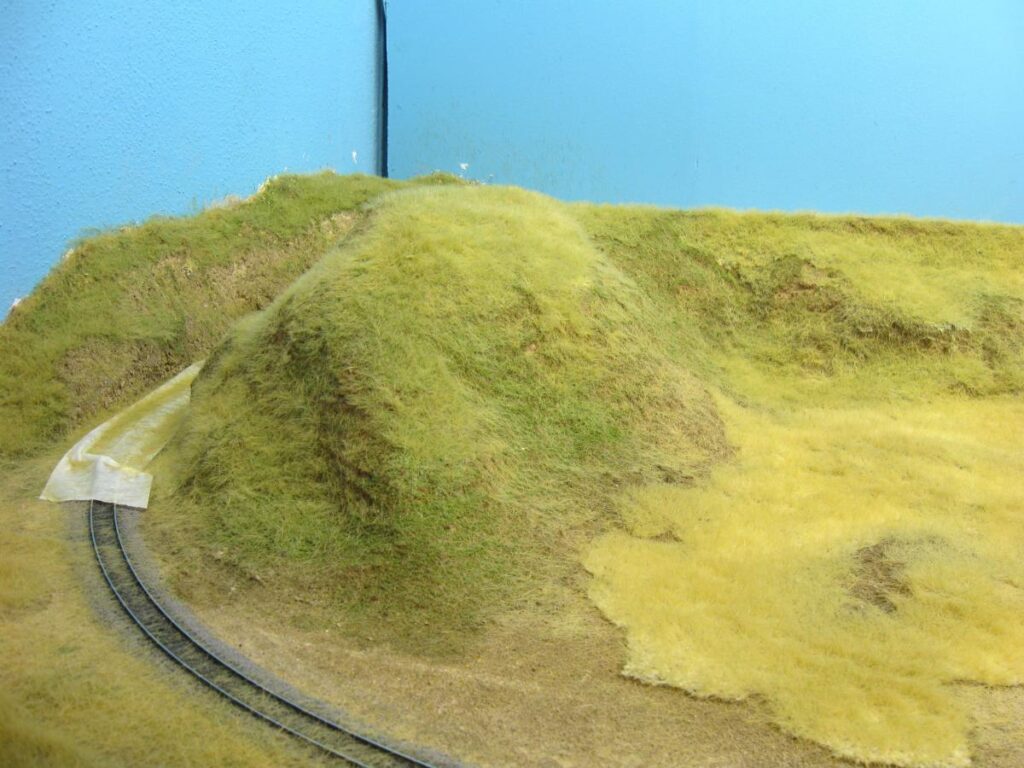
Then, I added some trees and bushes here and there, trying to capture the Southern California vibe.
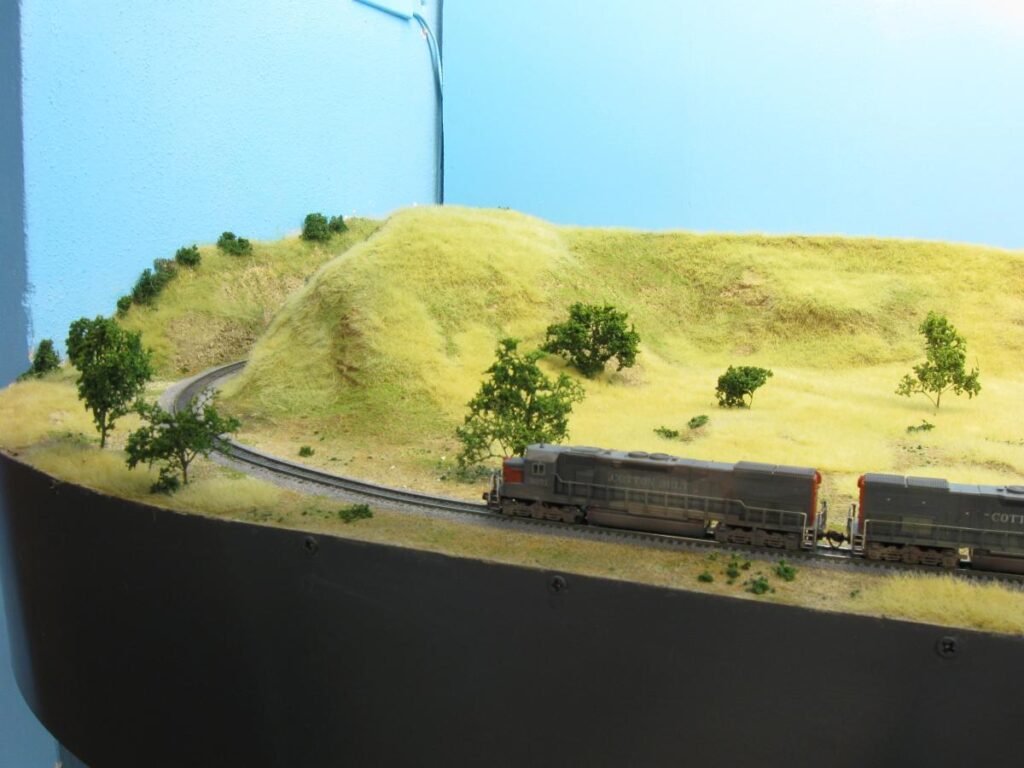
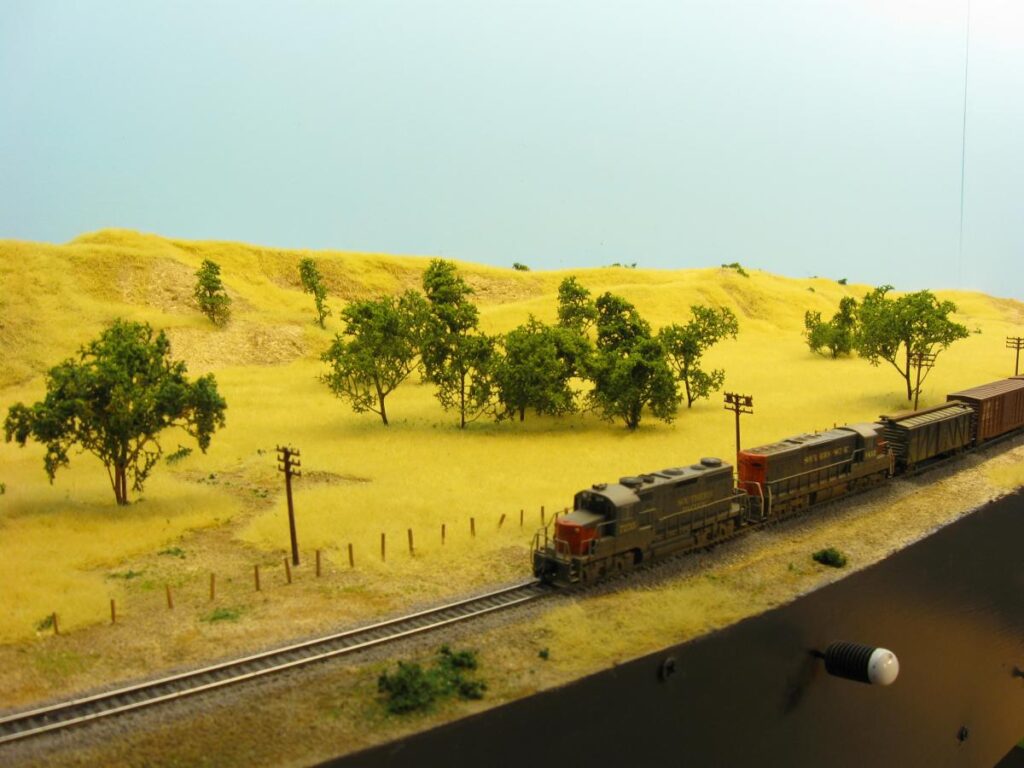
I used an European equivalent of Scenic Express Super Trees. I painted the bare tree a gray/brown color, then applied the green fine flocks with 3M spray mount. To highlight the trees I sprayed a light coat of paint with rattle cans as follows:
- black: from underneath the tree, to highlight the shadows
- yellow: from above, to highlight the leaves hit by the sunlight
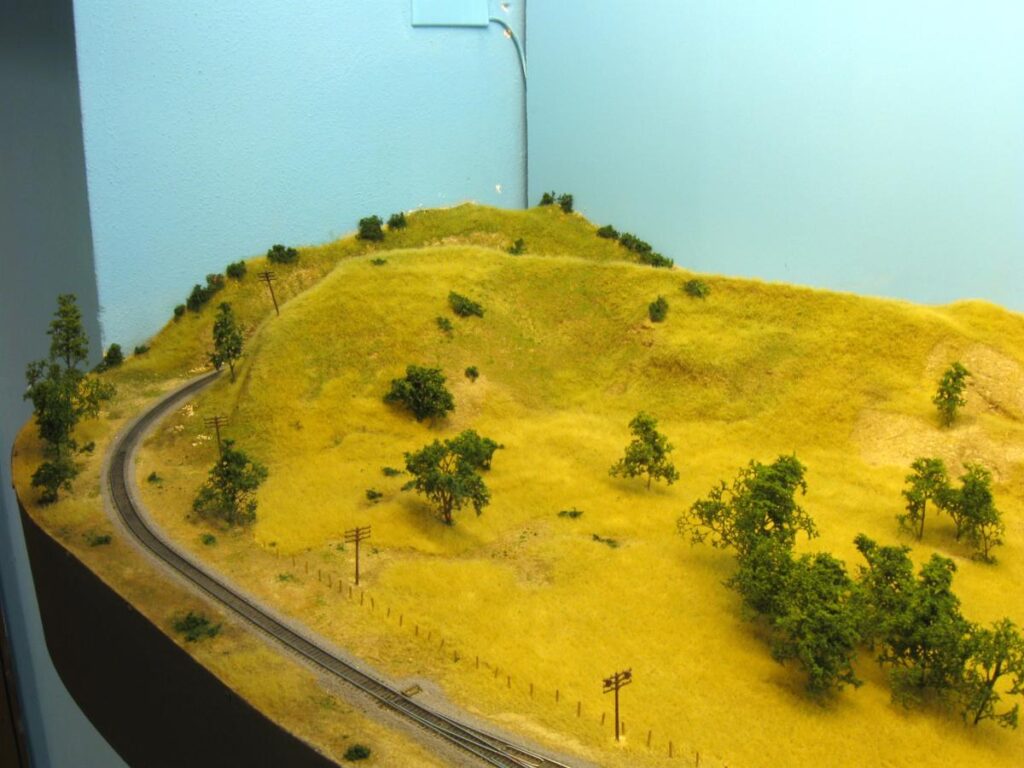
The End of the SP Coast Line in N Scale
The following two photos are the last ones I took of the layout before it was dismantled a few months later. A couple of weeks after completing this area my life took an unexpected turn. That was beginning of 2009.
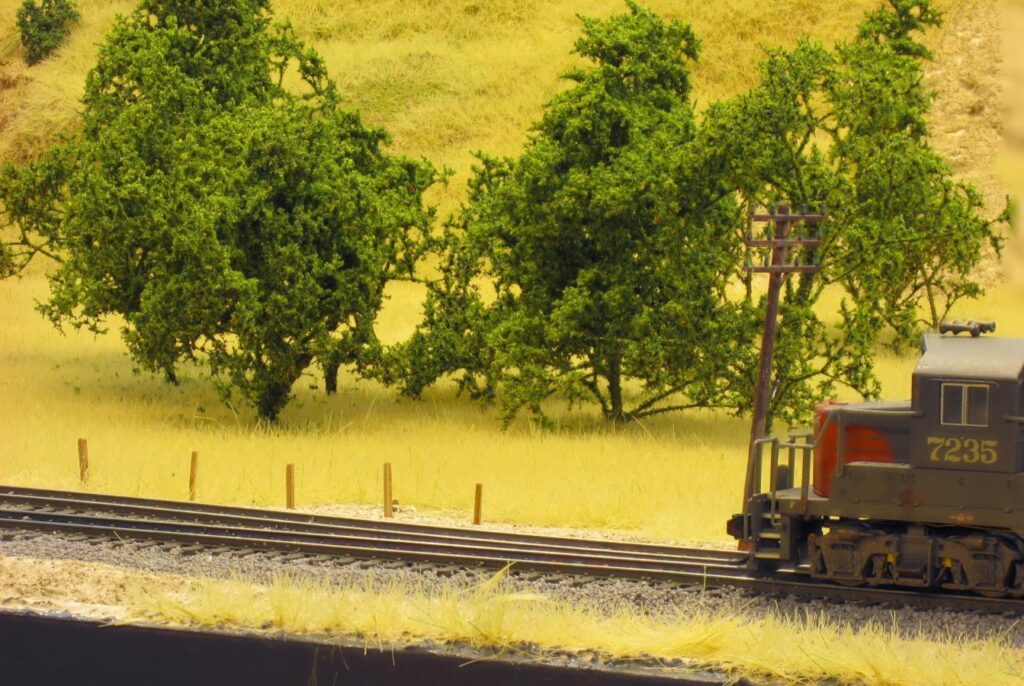
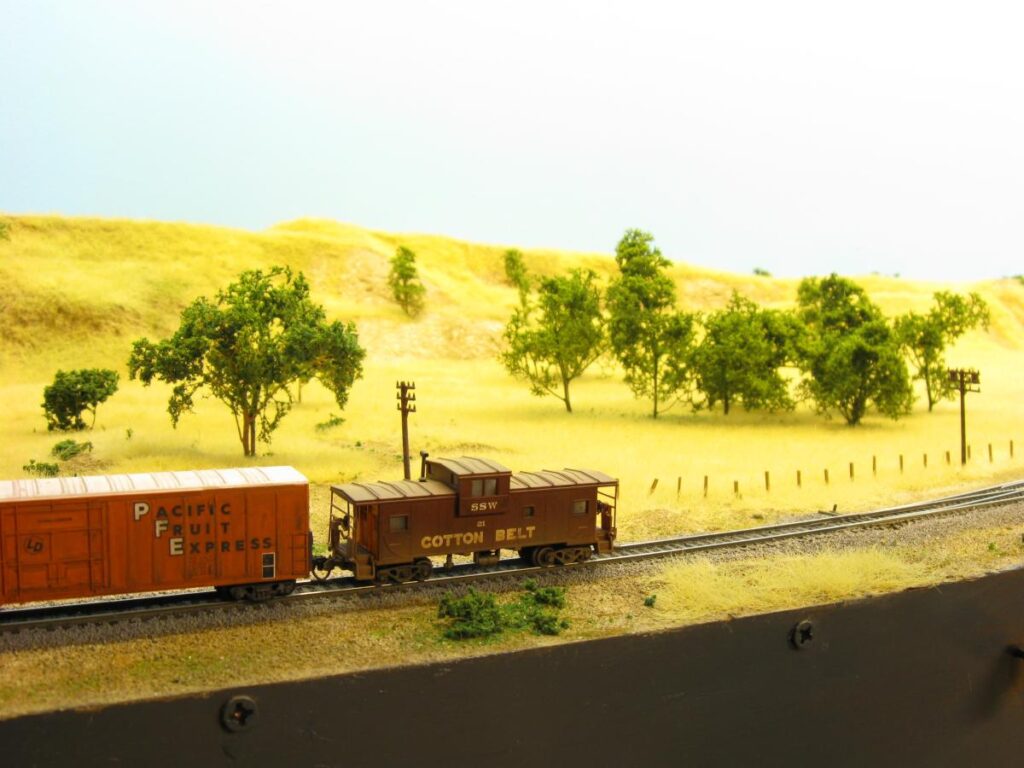
This marks the end of the SP Coast Line in N Scale – a layout I had so much fun building and operating. It taught me a lot of things about real railroads as well as modeling techniques.
Most importantly, I got to share all of this with friends who not only were kind enough to help me with construction, but also join for operating sessions – the ultimate purpose of the layout.